Today we continue with the Gun Owner 101 series, finally arriving at the guns themselves. Choosing a carry gun is a daunting proposition in market crowded with competing offerings. This article will hopefully offer some tools to help you thin the herd and arrive at the best possible handgun for your personal protection.
GO101: Lethal Force Considerations | GO101: Holster Selection
This article contains affiliate links.
Choosing a Carry Gun
This topic recently came up with a friend who teaches entry-level handgun classes. He was explaining some of the poor equipment choices he sees in his classes. Students show up, having made uneducated choices but the class still has to run. My friend has to sort through all the guns and holsters in the class and figure out how make each students’ gear work safely, and as well as possible. Sometimes that involves loaning out a gun, a holster, or both.
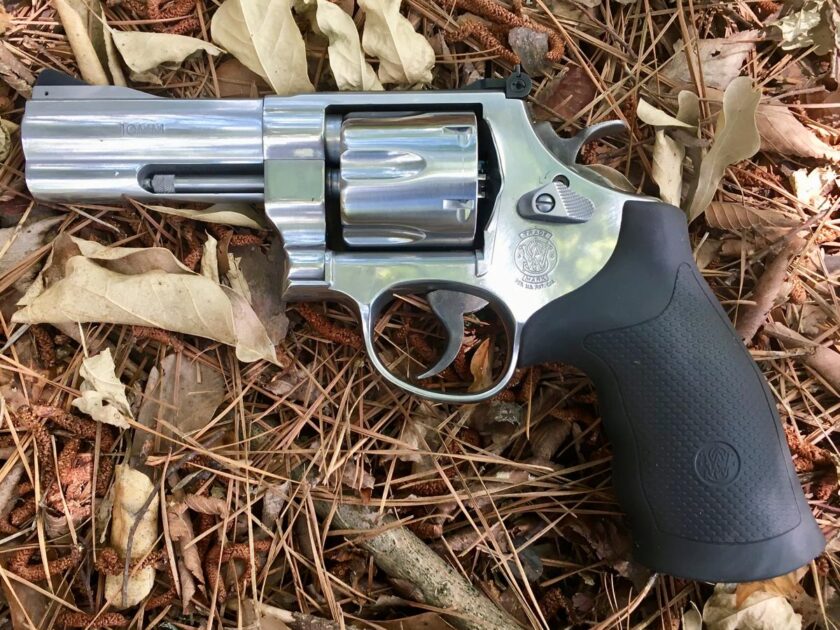
With the massive increase in new gun owners it’s not surprising. A lot of guns are sold on uninformed reasoning – because the gun looks cool, feels good, or Dad was issued one way back when. Some people choose a sexy cartridge – 10mm or .45, for instance – then choose a gun around that. Others, the “gun hipsters,” buy something just because it’s different. Those are all fine reasons if the gun is a range toy. If you are purchasing a firearm for self-defense, these criteria are terrible. You might get a good gun, or you might not. With bad selection criteria you’re leaving it to dumb luck.
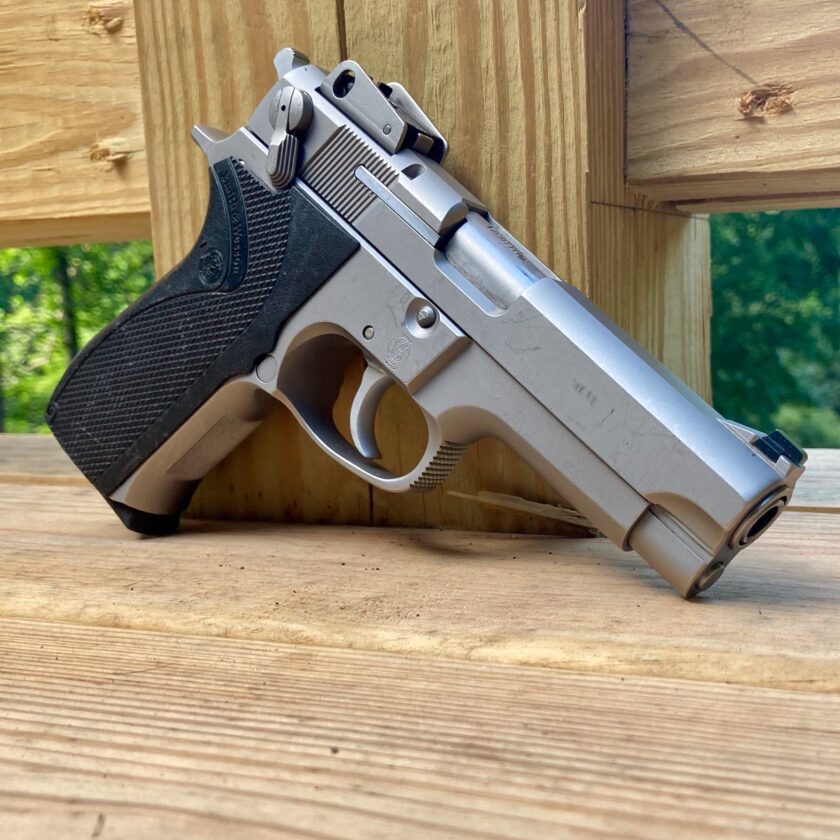
Every single high-quality criteria in choosing a carry gun should focus on performance. How well the gun performs in factors like reliability, and how well you perform with it in terms of safety, accuracy, and speed. Emotional criteria, aesthetic considerations, and brand loyalty should all be totally abandoned when choosing a carry gun. For instance, “I’m not going to follow the ____ herd” is not a good reason too choose or reject a gun. “I can shoot to objectively higher standards with x gun” is.
My Methodology for Choosing a Carry Gun
I haven’t always made great carry gun choices. In choosing my most recent couple of carry guns, however, I have (mostly) followed the criteria listed below. I have never written these criteria down and codified them as I am doing now. Hopefully this makes choosing a carry gun if not easy, then at least manageable. I hope this article helps even a very small handful of people make wiser choices, and end up better defended as a result.
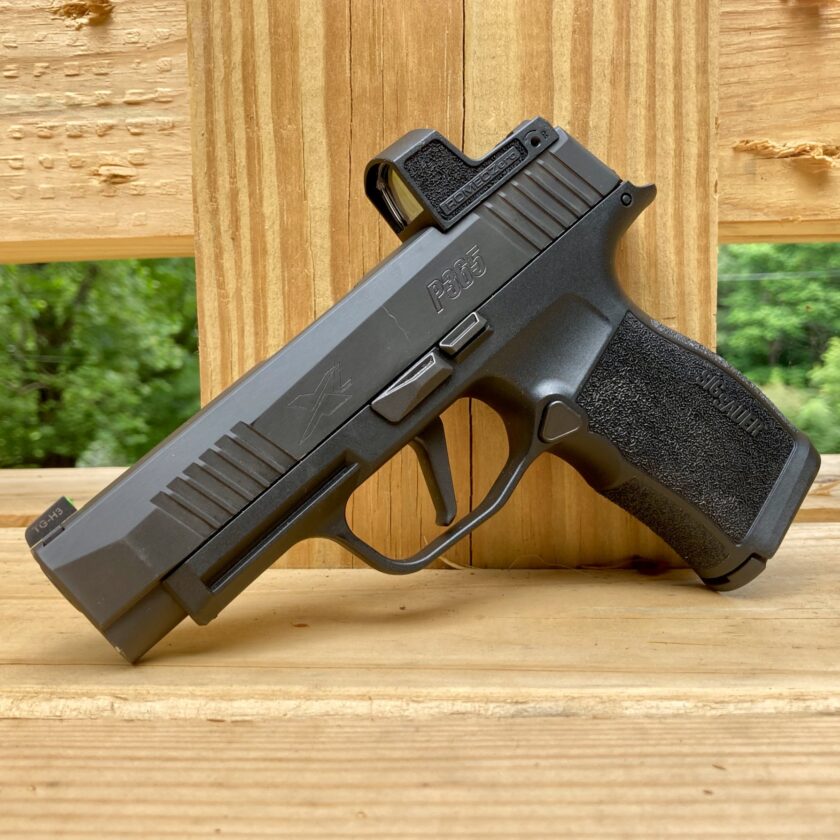
For the past three years I have carried a 1911. This is largely due to some Special Considerations (covered in my list below). The 1911 generally doesn’t make a great gun for many people. For the purposes of this article I wanted to truly put my money where my mouth is. I wanted to choose a pistol representative of one that does work for a broad swath of people. I purchased a Sig P365 XL, a firearm that almost perfectly represents the criteria I am espousing. As a result I have actually begun to carry this firearm a little bit and it may become my new, go-to carry gun in the near future – who knows?
The Target Audience
In keeping with the Gun Owner 101 theme, this article is intended for the first-time gun buyer. There are so many articles out there that cover some facet of gun ownership, but few cover the topic from top-to-bottom. This article would also be incredibly useful to the buyer who has decided to “get serious” in regards to defensive firearms. I can relate to this person, because it describes me ten years ago. As a matter of fact, I wish I’d heeded the advice in this article much sooner in my life. It would have saved me a lot of heartache…and money.
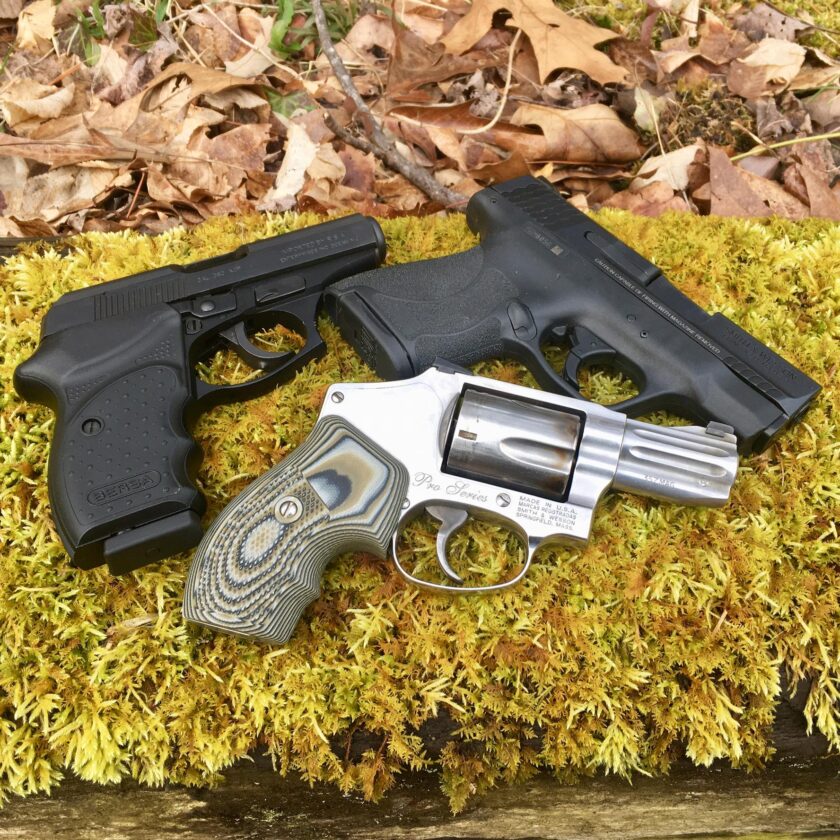
I’m not claiming you need to apply all of these criteria to every firearm you ever purchase. It is OK to purchase a gun because it looks cool, because it’s what your dad was issued, or for other, purely fun reasons. But please don’t purchase your defensive firearms in that manner. If you are purchasing a firearm with the intent of relying on it for defensive use, please, just some objective criteria like the ones presented here. I have broken firearm selection into two “phases.”
Phases of Choosing a Carry Gun
You can walk into the local gun shop, peer through the glass until something catches your eye, do some paperwork, and head home with your new pistol. This isn’t the best possible method of choosing a carry gun. I prefer a more methodical approach. These are the two phases that I use when selecting my next carry pistol.
Fact-Finding Phase, or Phase I. You can do every bit of your Phase I research on the internet. By talking to buddies, reading articles, watching videos, etc. you can ascertain all of these factors with a good degree of certainty. They are Mature Technology, Brand Reputation, Adaptability/Industry Support, and Chambering/Caliber. These criteria help drive the decision of which guns I’m willing to invest money, time, and ammunition into in Phase II.
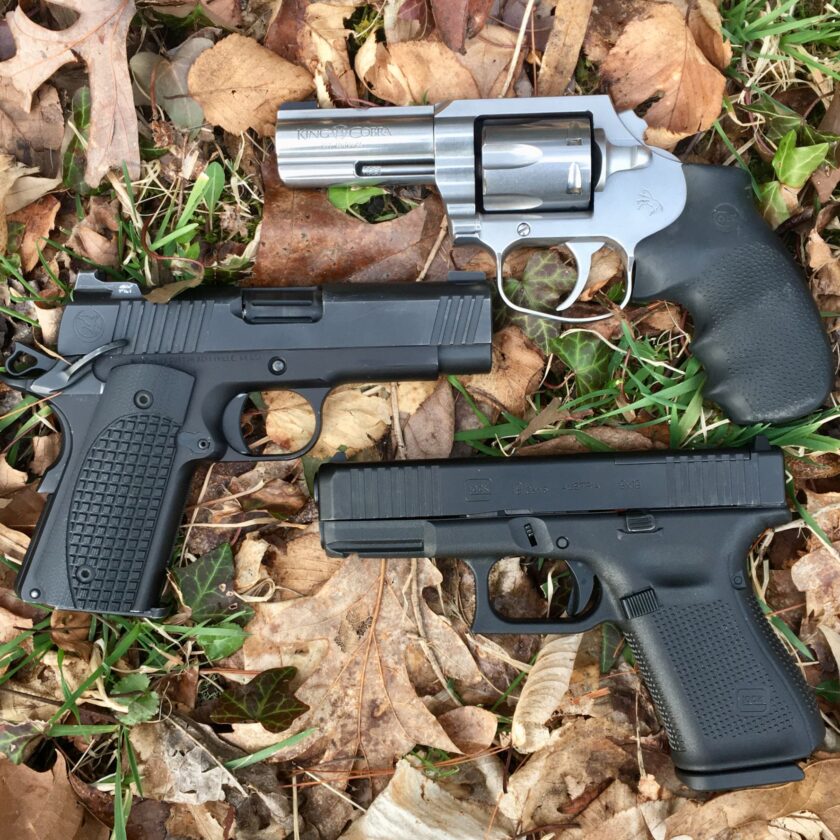
Experiential Phase, or Phase II requires putting hands on guns and rounds on paper. Though some of it can occur in the gun shop and the rental counter, most of it occurs after you’ve made a purchase. The criteria in this phase are ascertained by shooting, carrying, and using the guns. This phase proves reliability, determines accuracy, and demonstrates ergonomics. This phase is conducted at the range, and in your waistband.
I know there are a million ways to skin a cat. Don’t just listen to my advice. Get a second opinion. Be wary of folks telling you what gun to buy without telling you how they arrived at that decision, or considering other options. This article mostly presents “how to think” about choosing a carry gun – not merely a list of guns to buy.
With all the intro stuff out of the way, let’s get into it!
Phase I: Mature Technology
This is one of the most overlooked criteria I see when choosing a carry gun: mature technology. What does that mean? In essence, it means technology that has been around long enough to have the bugs worked out. In practice this means: wait until a gun has been on the market for a while before jumping in. Firearms – especially in today’s golden age of handguns – are extremely well tested before being sent to market. Unfortunately there is no test like placing the product in ten thousand sets of hands. Oftentimes bugs in firearms are discovered only after they have been released to the public.
The easy way to deal with this is to avoid purchasing firearms that are brand new to the market. I would wait at least two years after public release before purchasing a firearm for defensive use. Modifications on an existing design are generally a safer bet. If the underlying design is sound, a slightly modified (shortened, lengthened, etc.) design is usually trustworthy as well. I would still be inclined to give it a year or so for any issues to emerge before buying one.
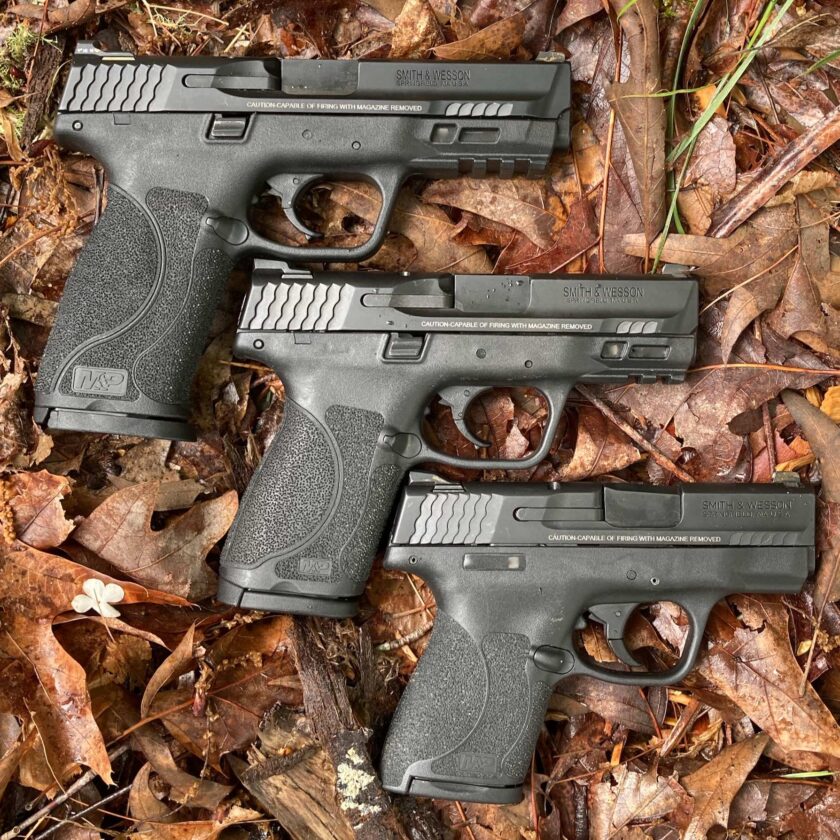
Sometimes these design bugs aren’t corrected, or the underlying design is faulty beyond repair. How are you going to know? I recommend reading a wide selection of online reviews. Don’t just read your favorite blog, read a bunch of them. Don’t just watch your favorite YouTube personality; watch a variety of YouTubers. Make your research as broad and as deep as possible. If you have the disposable income for range toys, go ahead and buy the brand new, whiz-bang, wonder gun. For defensive users, give it a little time.
Does my Sig P365 XL pass the Mature Technology test? Yes – the baseline P365 has been in production for three over years (since 2018). It had some teething problems upon introduction, which have since been resolved. In June of 2018 the slightly larger P365 XL was released. I purchased my P365 XL two years after its release, which is plenty of time for issues to be identified and corrected.
Phase I: Cost
Cost seems like a secondary consideration. It is not – it is a very real consideration for many. This creates a fine line to walk. While I want everyone to equip him- or herself with the best possible equipment, I also recognize other needs, like the need for financial security. The point of this section is: don’t buy a gun at the absolute top of your budget if a reasonable option exists somewhere in the middle. For instance, if $1,200 is all you have to spend, don’t buy the $1,200 Dan Wesson 1911 when the $600 Glock 19 will work just as well. Why not? Well, there’s still plenty of other stuff you need to go along with your new pistol.
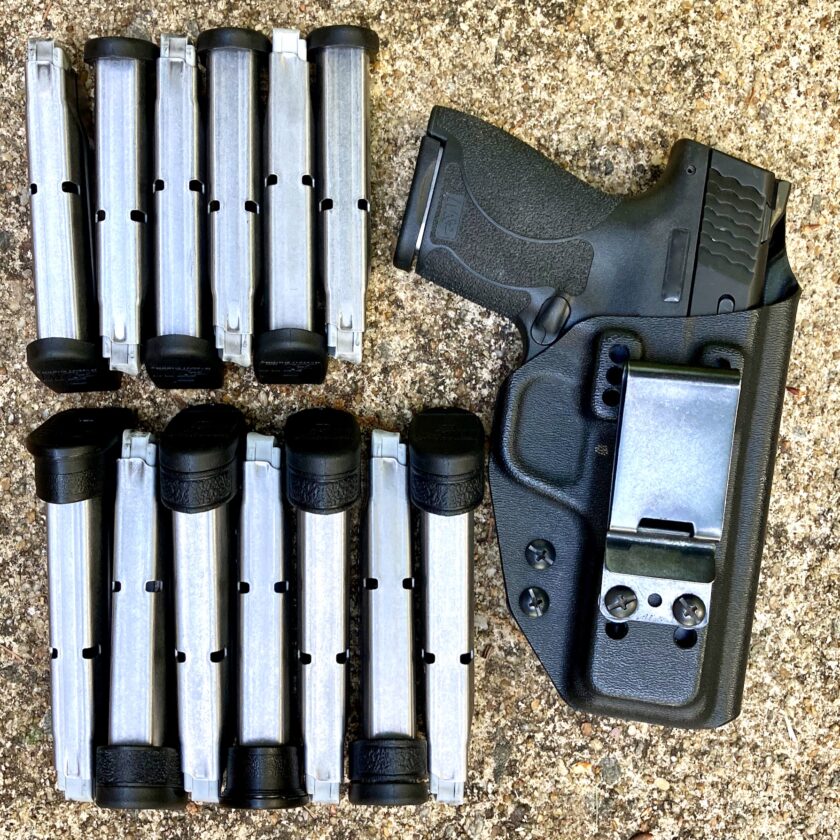
Most crucially you will need a holster. Quality holsters cost anywhere from $50 to $100. A holster serves a number of purposes and you don’t want to create a safety hazard by using a crappy one. You will also need magazines. Magazines break, wear, and otherwise become unserviceable. They don’t last forever. so you will need a few that are earmarked as duty/carry mags, and a few that are dedicated range magazines.
You will also need ammunition. Ammunition is required to verify reliability, ascertain accuracy, and determine your ability to manage recoil. It is also very important to skill development. Though you can do some fabulously effective training in dry practice, you’ll definitely want to shoot some. Ammunition cost can be considerable (especially right now) so factor in the cost of 1,000 rounds of ammo, as well.
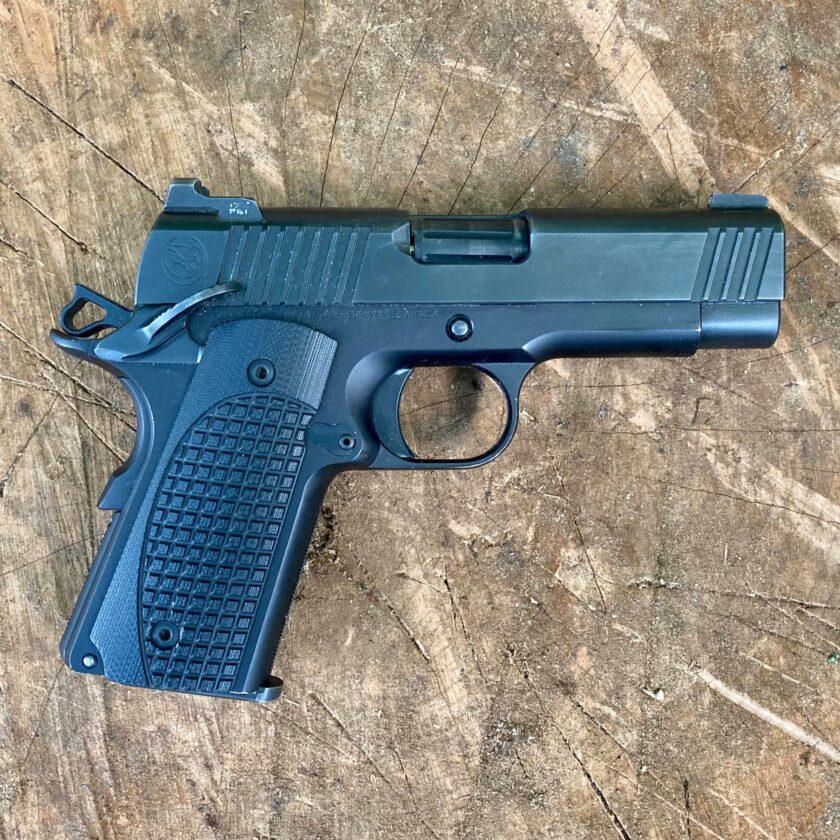
If cost is one of your chief criteria, consider a used pistol. Most used pistols have less than a few hundred rounds on them. They will likely last for tens of thousands of rounds. Save yourself the extra cash for the “new gun smell” and find a bargain on like Gunbroker.com and Armslist.com.
Does my Sig P365 XL pass the Cost test? Yes, at least for me. I purchased my it for $650 after some shopping around. This is about $100 less than the average cost for the XL with an included red dot optic. I didn’t just pull $650 out of the bank – I sold three other handguns for a total of $1,400 to finance the Sig and the accessories to go with it. If you are a brand-new gun owner you won’t have guns to sell, but where there’s a will, there’s a way. Save, work extra shifts, pick up odd jobs…
Phase I: Brand Reputation
Next, I would recommend considering manufacturers that are known for their durability and reliability. Brand reputation is less important if you’re purchasing a range toy or novelty, It is incredibly important when choosing a carry gun. These guns are usually a bit more expensive than budget-oriented counterparts. However, the cost is usually worth it. The additional cost generally reflects a deeper R&D process, higher quality materials, better workmanship, and customer service overhead.
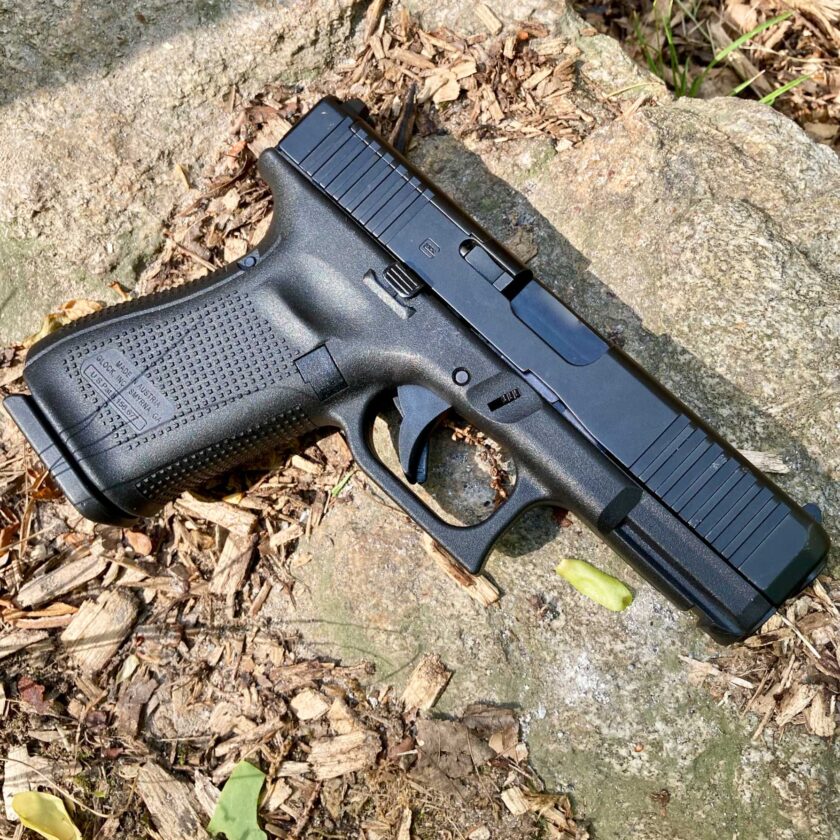
Some brands that I would recommend without hesitation are Beretta, Glock, Sig-Sauer, Ruger, and Smith & Wesson. All of these brands will serve you well. Glock firearms are regarded as some of the most reliable in the world. While I wouldn’t recommend all of their designs, Sig’s P320 and P365 lines are also regarded as excellent duty/carry pistols. Smith & Wesson’s Shield is one of the most popular carry pistols in the world for good reason. Their M&P line is spectacular, as well. Ruger handguns enjoy both a reputation for excellent quality and lower-than-average cost.
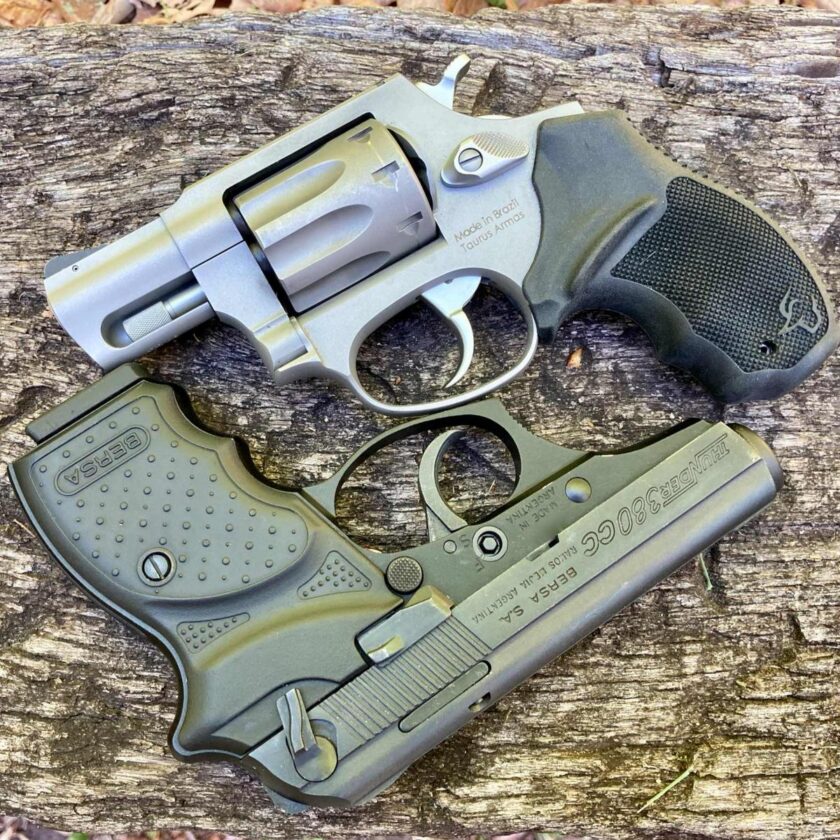
Unless they are absolutely all you can afford, I would avoid the budget brands. I would shy away from Bersa, SCCY, and Taurus firearms. Though some of these handguns work very well, you are more likely to have problems than with guns from higher-end manufacturers. Some questions to ask in regards to brand reputation are:
- Are the manufacturer’s firearms widely issued to, or approved for duty by law enforcement agencies?
- Do they have a strong reputation for reliability and durability?
- Is their customer service known for doing a good job…or not?
Does my Sig P365 XL pass the Brand Reputation test? Yes – it is manufactured by Sig-Sauer, a top-tier brand. The P365 is widely recognized as an industry-leading pistol
Phase I: Adaptability & Industry Support
When choosing a new carry gun I would make sure the firearm you choose is both adaptable and well-supported by the firearms industry. Let’s look at each of these criteria separately.
Adaptability
I consider this “future-proofing.” You don’t want to buy a gun only to realize six months later that yes, it would be nice to hang a light off the end of the gun. Does your chosen gun have some sort of rail-like attachment? Does it have the ability to mount a red-dot optic? I wasn’t too hot on pistol red-dots when they first started appearing. Now I’m convinced that in 20 years they’ll be about as common as optics on carbines.
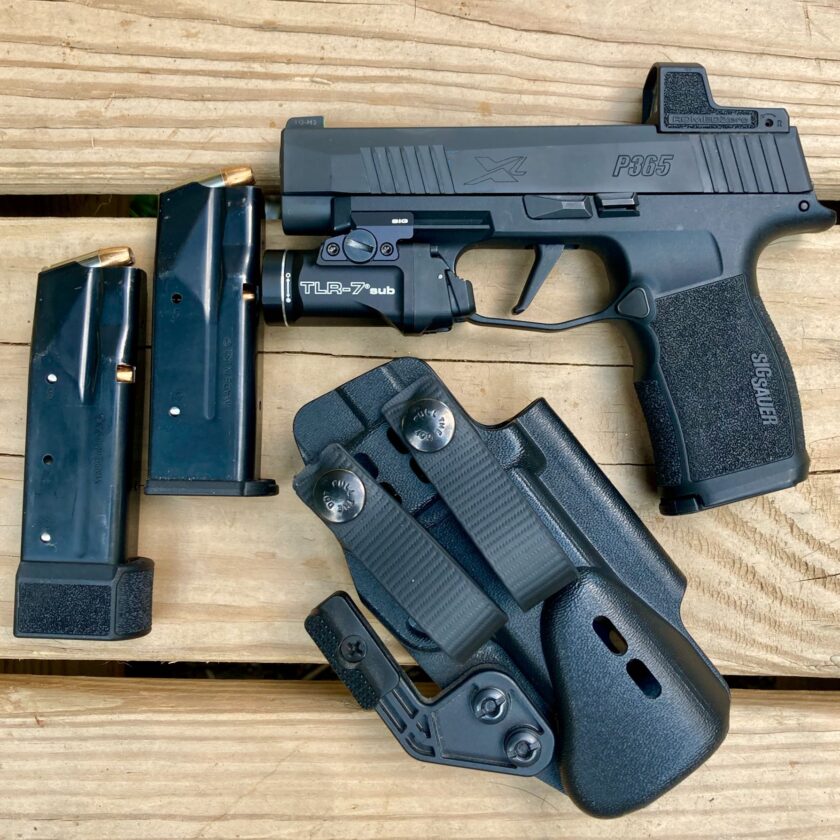
Inevitably technology will improve and eventually your gun will lack a feature that you find important. However, I think it’s a good idea to start with something that is in line with current standards.
Buying into a Family of Firearms
I would consider buying into a “family” of firearms. That is guns from a single manufacturer, in a single line that share similar characteristics but vary in size. Oftentimes this gives you the benefit of being able to share magazines between guns. Although you are only purchasing one gun now, this can help ease future decisions. The Glock 17/19/26 is a good example; the Glock 19 can also utilize Glock 17 magazines. The 26 can use both 17 and 19 magazines. This is true for other firearms, too, like Smith & Wesson’s M&P line, where the full-size, compact, and subcompact M&Ps can share magazines with each other. This lets you buy fewer magazines, and have more versatile magazines.
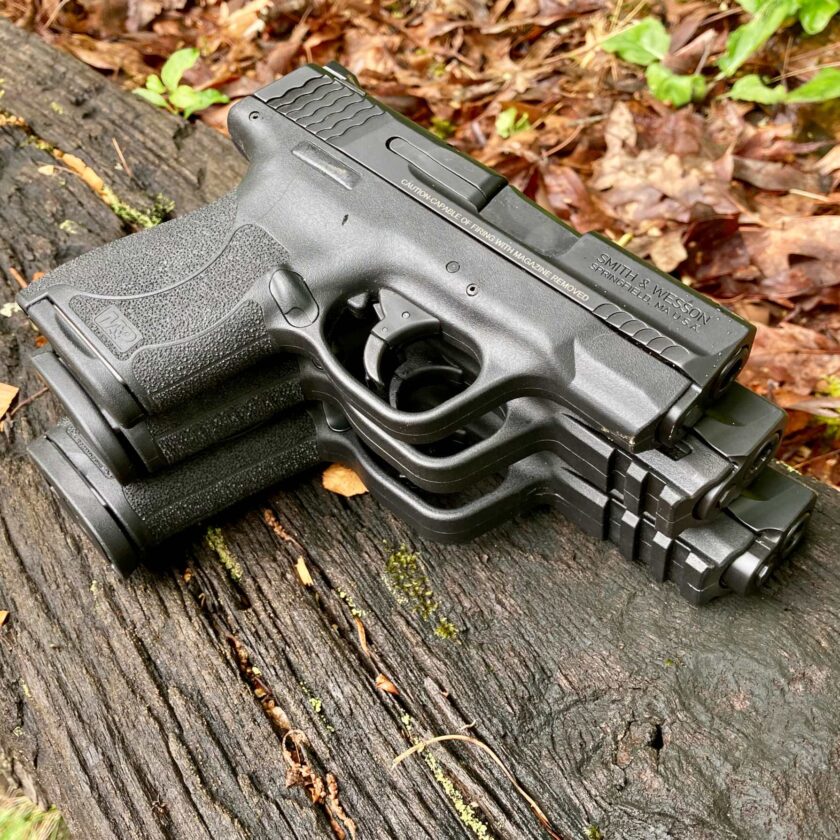
Buying into a family of firearms also has some other benefits, even if they don’t all share magazines. First, all your guns have a similar feel and identical manual of arms. This breeds familiarity and ultimately confidence and competence. Second, this gives you a backup firearm to adopt should your primary carry gun be stolen, damaged, or confiscated after a defensive shooting. Being able to immediately pick up another gun that has the same handling characteristics is an ideal situation.
Industry Support
Most crucially this means holsters. I’ve written about holsters in deep-dive detail and won’t belabor it here. Bottom line, though: you need a holster. The more mainstream and commonplace your gun is, the more holsters will be available to you. Before buying a gun I’ll cruise a couple top-tier holster makers’ sites and see what’s offered. Industry support doesn’t end with holsters. Are high quality lights, sights, optics available? Are magazines readily available? For those of you considering a revolver: are speedloaders available for the wheelgun you are considering?
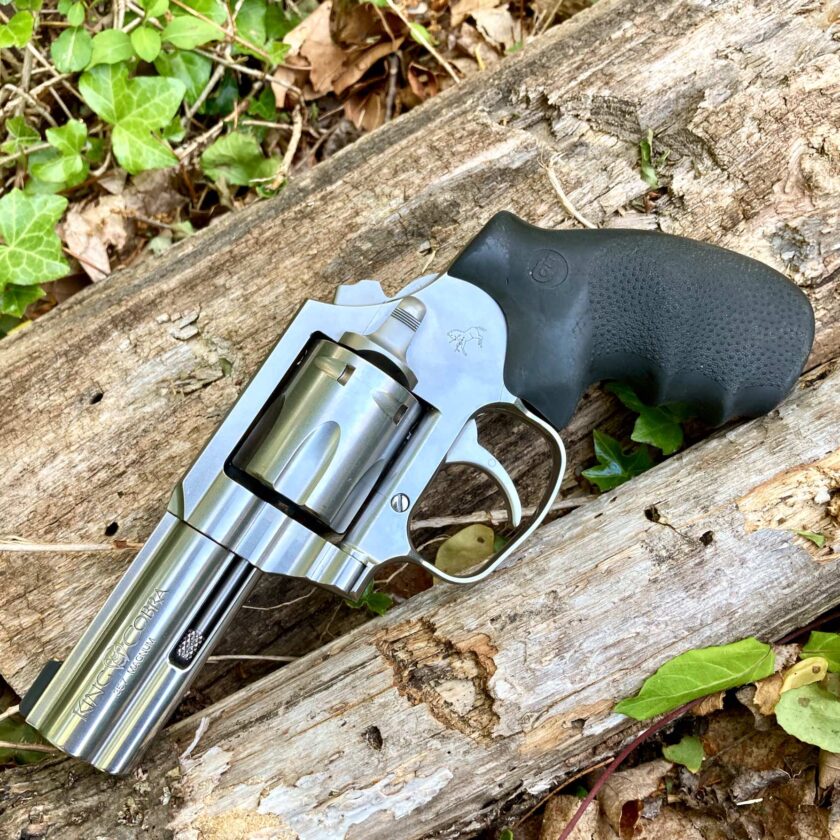
Does my Sig P365 XL pass the Adaptability & Industry Support test? Yes – first, the P365 platform is inherently adaptable. The Fire Control Unit can be removed and installed in smaller grip frames. Shorter/longer slide/barrel combos may be installed, as well as various capacity magazines. The P365 also supports use of both a light and an optic. The Sig P365-series has been a top seller for almost four years new and enjoys top-tier industry support. Everyone makes holsters for it. You can also find just about anything else for it. Unfortunately the P365 isn’t really part of a family of firearms.
Phase I: Chambering/Caliber
I would place far more emphasis on the previously-listed criteria than I would on attempting to arrive at any specific chambering (the type/caliber of ammo the gun takes). If you follow most of those criteria you be somewhat naturally lead to the 9mm Luger. Chambering does play a role in many of the other criteria, above and below, and can’t be completely ignored. Here are the things I think about in regards to chambering.
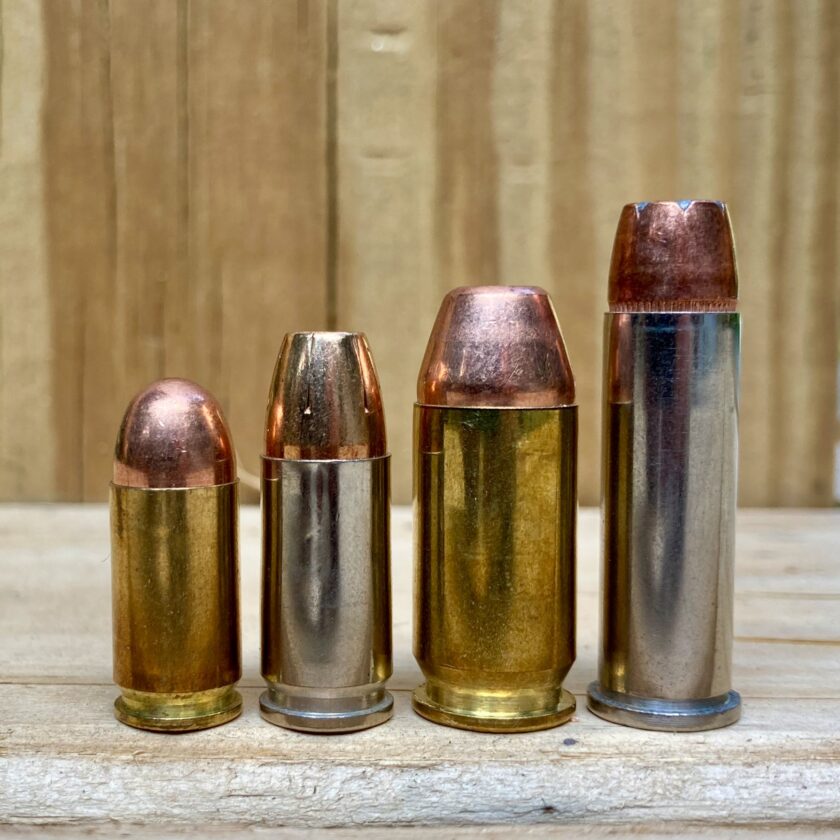
Ergonomics
Sometimes larger-caliber guns are physically larger. The .45 ACP/10mm Glocks are built on a bigger frame, for instance. This impacts your grasp, which influences recoil management. It also makes the gun heavier, and more difficult to conceal. Think about this if you’re considering a .40 or .45.
Ammunition Cost
Nine millimeter ammunition is the cheapest handgun ammo money can buy. Sure, you’ll only need a handful of rounds in a fight…provided you’ve invested thousands in training. Invest in a cartridge/gun combo that you can afford to train and practice with as much as possible.
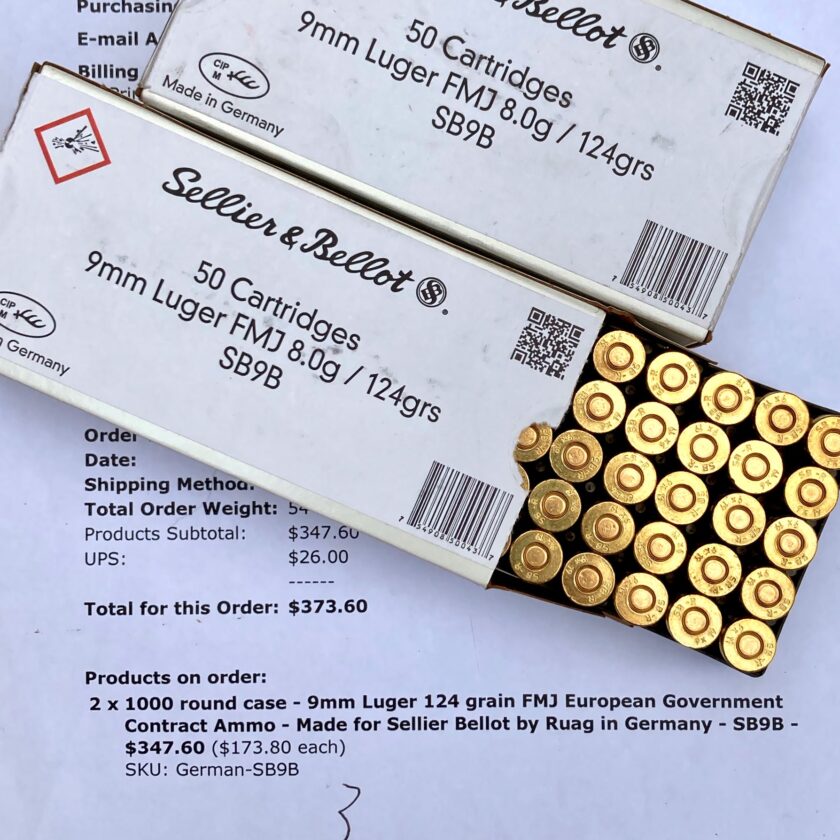
Recoil
I know, I know – none of you are worried about recoil in a gunfight. What we should be worried about is the ability to drive the gun and get multiple, accurate hits as quickly as possible. There are no magically-incapacitating handgun calibers. Nine millimeter, .40, and .45 all perform about the same in the real world. Less recoil means more accurate follow-up shots in less time, which shortens the overall duration of a gunfight. The faster a lethal threat is neutralized, the smaller the chance you or your family will be injured or killed. It’s not about how manly you are – it’s about physics.
Capacity
I’m not a super concerned when it comes to capacity. More is nice, but it is a very low-level consideration for me. Regardless of what you choose, however, 9mm will hold one or two more rounds.
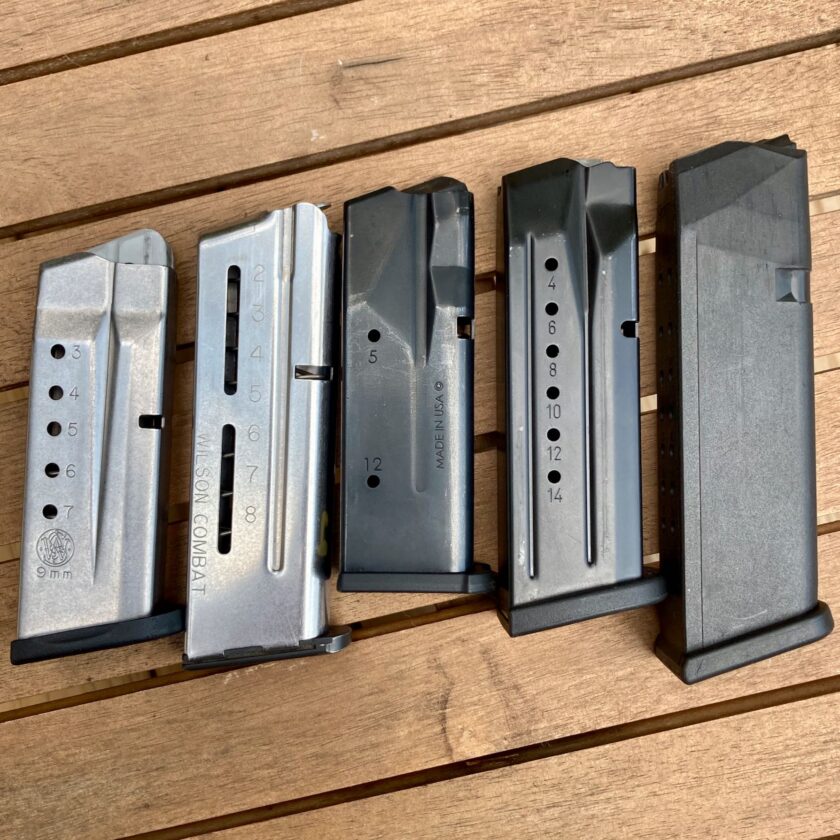
My Recommendation
In regards to chambering, I recommend going with a 9mm. The 9mm cartridge is easier to shoot well. It is less expensive, making training and regular practice more attainable. It has less recoil (all other things being equal) making rapid strings of accurate fire easier and faster. Using the smaller 9mm cartridge allows your magazines to hold an extra round or two. In many (but not all) cases it also means your gun is smaller and lighter.
If you really want that .40 or .45, though, go for it. All other things being equal caliber is so rarely the difference-maker in either direction, good or bad. If you are leaning toward a .40 or .45, I would encourage you to make a “pros and cons” list. Only list objective criteria, and truly weigh the options. Take emotion completely out of the equation and see if you’re still on the “caliber that starts with ‘4’” train.
Maybe the math does work for you. If you have hundreds of dollars of disposable income each week, you can probably afford .40 or .45 ammo (and it’s probably more available than 9mm right now). If the math doesn’t work, think long and hard about the real reasons you desire the bigger cartridge.
Does my Sig P365 XL pass the Chambering/Caliber test? Yes, it is chambered in 9mm. That’s the only cartridge this firearm is chambered for, but even if other options were available I’d stick to 9mm for the reasons listed above.
Phase I: Special Considerations (Optional)
Though they are outliers, there are some special considerations that may merit your attention. Further, if you have these considerations you are not likely a first-time gun owner and have a decent amount of experience and at least some training. I will cover the briefly, however.
Duty Gun Alignment: If you are issued a particular firearm, it makes sense to carry a similar one off-duty. While cops can take their duty guns home, soldiers and some security guards can’t. Some cops may desire a smaller version of their duty gun for personal, off-duty use. If this sounds like you, I would strongly recommend carrying a smaller version of the same gun off-duty. For example, if you are issued a Glock 17, a Glock 19, 48, or 43 should be your top contenders.
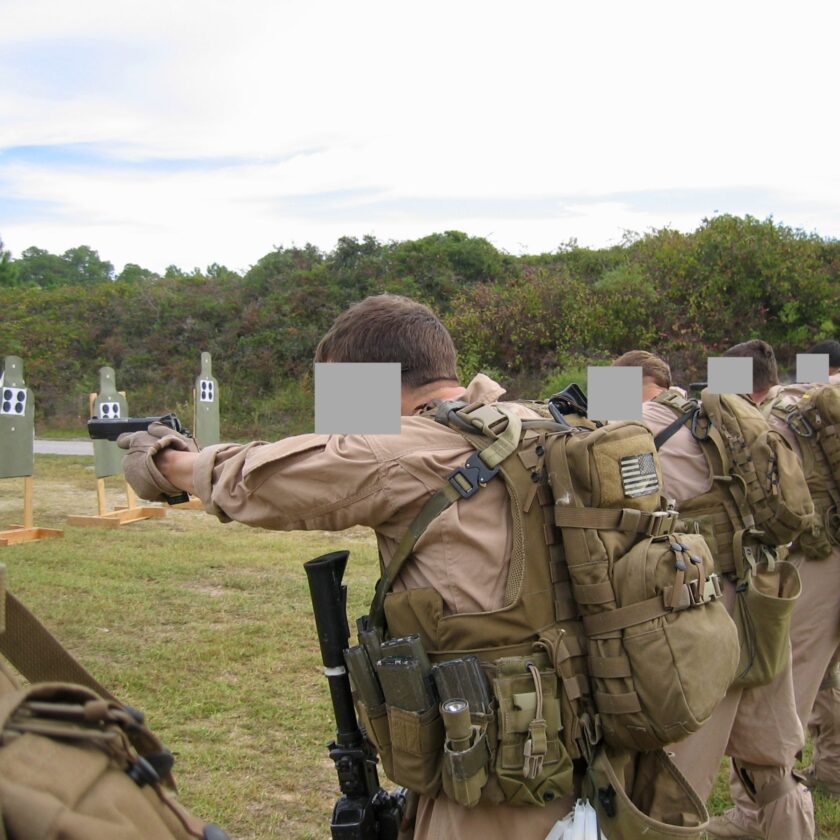
Training/Experience: You may have a large body of training and experience with a certain handgun, as I do with the 1911. If that is the case, it might make sense to consider carrying a firearm similar to that you are trained on. This makes transitioning easier, especially if you don’t intend to do much future training or practice.
Does my Sig P365 XL pass the Special Considerations test? No, but none are fully applicable in this case.
Phase II: Reliability, Reliability, Reliability
Reliability is undoubtedly the single most important factor. Regardless of what else your carry gun is, it should be reliable. If you’ve followed my advice to this point, you’ve set yourself up for success. Your gun is from a reputable manufacturer and has a proven track record. It should be reliable. Unfortunately there is only one way to find out if YOUR gun is reliable. You have to shoot it.
What is Reliability?
I define “reliable” as the ability to fire 1,000 consecutive rounds without a malfunction. At least 100 of these should be your duty/carry ammunition. Set yourself up for success. For the first 1,000, don’t go into some “torture test” mode. Clean and lubricate the gun. Use clean, high-quality, brass-cased ammunition. Stick to easy-feeding, FMJ ammo. You want to make sure it runs under ideal conditions before throwing it a bunch of curve balls. Minimizing variables makes it much easier to identify any problems that may arise.
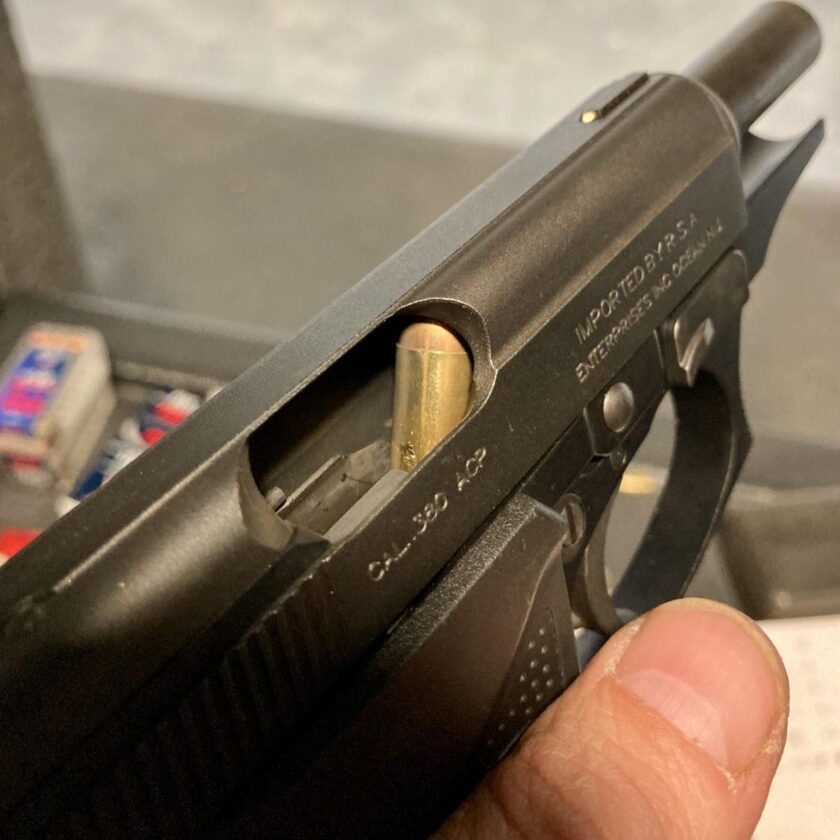
If it runs flawlessly for the first 300-400 rounds, then add some additional layers of difficulty. Be careful to only add one variable at a time, however. You can add a variable by going a few hundred rounds between cleanings. You an add a variable by trying a couple magazines of your defensive ammo. If you do both at the same time (first mag of hollowpoints, the first time the gun is 500-rounds dirty) how do you know which is the issue?
Special Note
Special Note to Brand New Concealed Carriers: the common recommendation is to be sure your gun is reliable before carrying it. If you have just purchased your first carry gun, verifying reliability should be your top priority. However, I don’t believe you have to wait until you’ve fired 1,000 rounds to begin carrying. After you’ve fired a hundred and the gun works, I say go ahead and start carrying, provided you are legal to do so and competent in safe handling.
Reliability with Carry Ammo
At some point you will have to begin shooting the defensive load, typically a hollowpoint. Modern handguns feed hollowpoints much more reliably than they did in yesteryear. The recommendation from 25 years ago was to fire 200 rounds of your defense ammo before depending on it. Today I think you can safely get by with half that amount. Test the defensive ammo in the configuration you will use the gun. If you intend to have a flashlight on it, test the ammo with the light in place. If you plan to make some other modification, ensure you test your carry ammo post-mod.
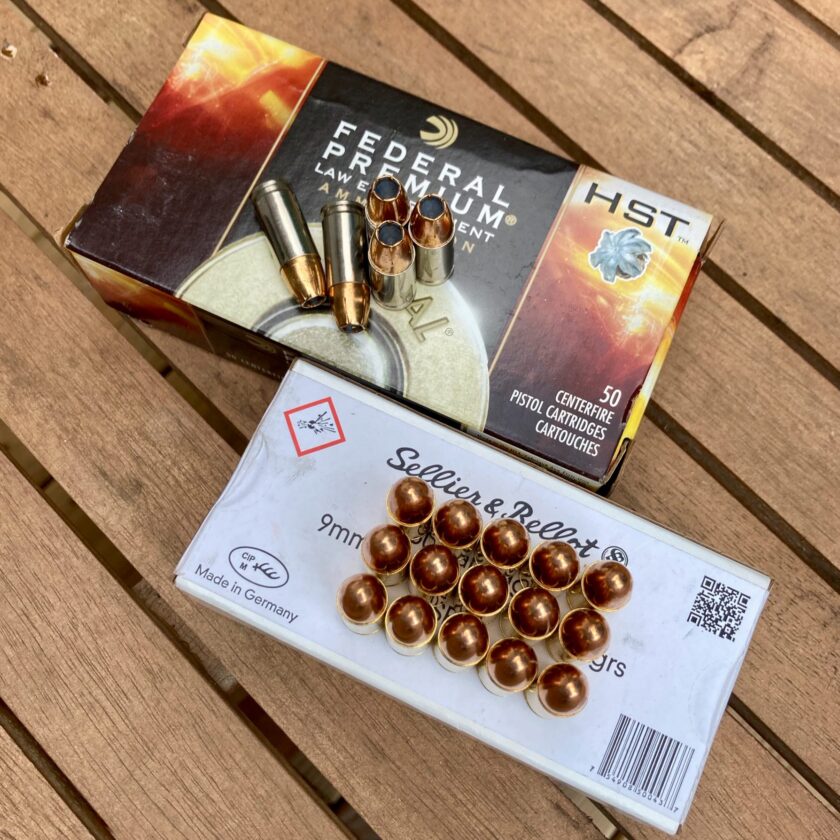
I’ll talk about choosing defensive ammo in another article, sometime in the future. Your best results will be with clean/new, high-quality, mainstream brands in medium-for-caliber bullet weights. Personally I would stick to Federal HST, Hornady Critical Duty, Speed Gold Dot, or Winchester Ranger ammunition. These all have tremendous reputations in actual gunfights.
Malfunctions
A malfunction can be soul-crushing when you’ve spent all your money on a gun. Keep in mind that a single malfunction is not an automatic deal-breaker, though. You don’t necessarily need to melt the gun down and go completely back to the drawing board. A malfunction can be caused by several things, including lack of maintenance, bad ammo, bad magazines, and poor technique. If you can identify the malfunction as ammo-related/caused, change the ammo and the issue should go away. Some firearms, like 1911s, utilize a number of a aftermarket magazines. If the magazine seems to be the issue replace it and see what happens.
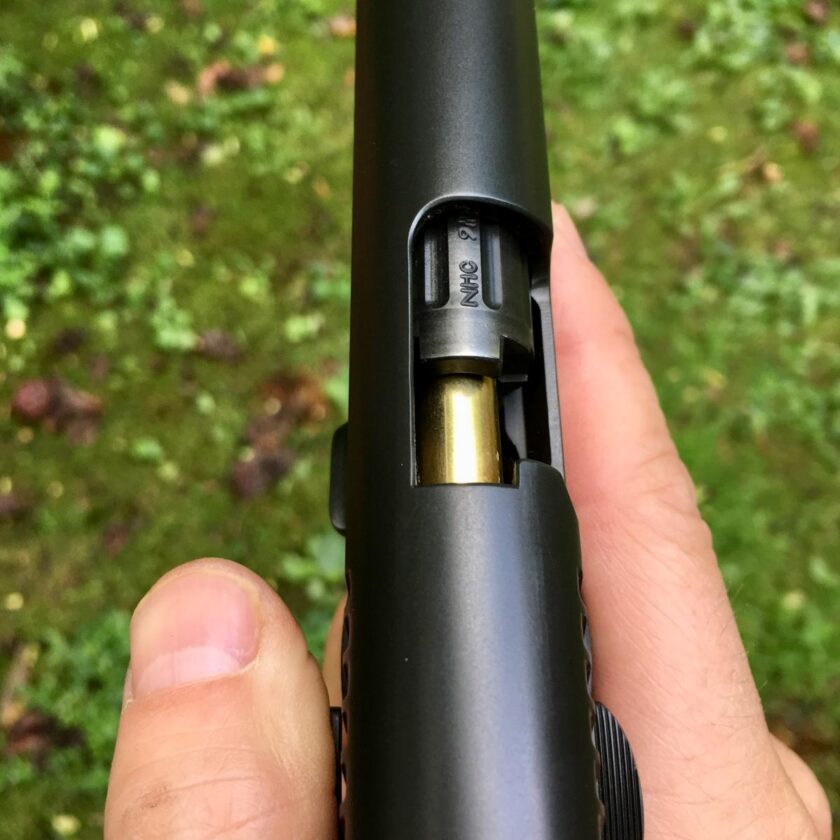
If the issue is related to technique, seek training and see if you can fix the technique. For example, a failure of the slide to lock to the rear could be caused by hand placement. Identifying this as the culprit could save you a lot of disappointment in your new pistol. User-induced malfunctions can be caused by things like “limp wristing.” This can present in any of several ways, and is more common with small, lightweight firearms. Again, high-quality instruction could likely identify this and redeem your handgun, saving you hundreds of dollars.
Also keep in mind that some problems, while undesirable, aren’t the end of the world. For example a failure of the gun to lock the slide on an empty magazine is tolerable in my opinion. Sure, you’d prefer the gun work perfectly. However, reloads in civilian shootings are virtually non-existent. Second, even if you do need a reload (and happen to be one of the small percentage of concealed carriers in possession of one) you can still reload – it’s just a tad slower.
Recording Malfunctions
As you are performing your reliability testing, keep a range log. It doesn’t have to be complex – I record the date, the number of rounds fired by type, and any malfunctions that occurred. If you have a malfunction, carefully note what happened. While being extremely careful to keep the gun oriented downrange, note whether the slide is fully forward, fully rearward, or somewhere in between. Note rounds or empty brass in the gun’s feeding area. Be aware of any unusual report, strange smell, or odd recoil impulse. Note whether or not the trigger is “dead” or live. If possible to do so safely, take a photo of the gun in its malfunctioned state. This information will help you determine the type of malfunction that occurred. This will help you determine if the problem is the gun, magazine, ammo, or you. In turn, this will help you correct the issue and get your gun running to an acceptable reliability standard.
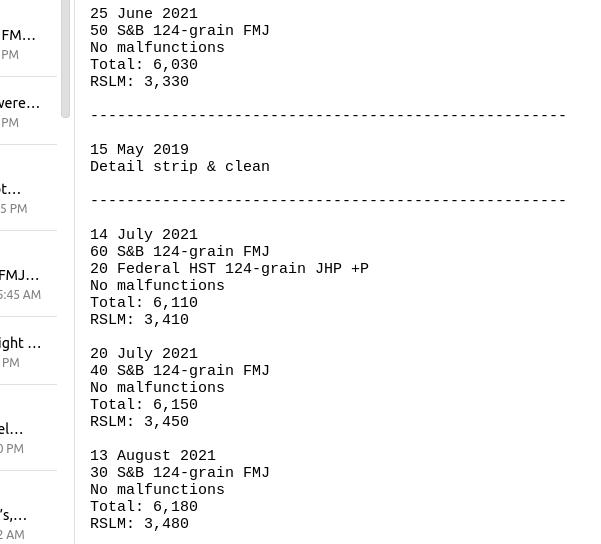
Note: Keep a special eye out for a malfunction called a “squib load.” This is a 100% ammunition-related malfunction. However, firing a second shot after a squib can permanently damage your firearm and injure you. I have written about this type of malfunction HERE.
Does my Sig P365 XL pass the Reliability test? Yes, at least so far. I have fired 760 rounds, including 43 defensive rounds (Federal 124-grain HST). It has yet to have a malfunction was due to the firearm. Twice the slide has failed to lock to the rear, but this has been due to user-error (hand placement). Testing will continue, but so far reliability has been good.
Phase II: Ergonomics
Ergonomics is a somewhat misunderstood subject. Usually this is summed up as, “does the gun ‘feel’ good?” There is much more to ergonomics than “feel.” Below are some better questions to ask and answer before checking the ergonomics box.
Manipulating Controls
Can you activate the gun’s safeties? At the beginning of the article I mentioned a friend who teaches beginner classes. He recently told me about a student who repeatedly attempted to holster his 1911 without engaging the thumb safety. This creates a huge safety hazard. When questioned the man said he had arthritis and didn’t plan to use the safety on his 1911. This is incredibly dangerous. While modern striker-fired guns are designed to be holstered without a manual safety, the 1911 is not.
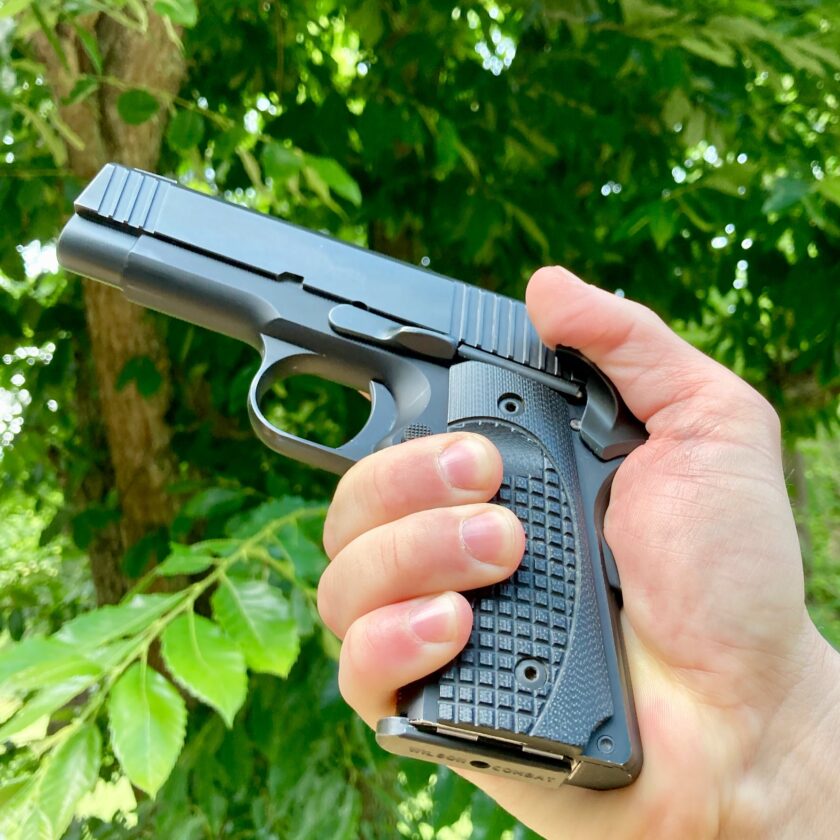
The same goes for double-action/single-action pistols. After a string of fire the hammer will be cocked and the trigger is set up for a very short, single-action press. You must decock before reholstering. If you can’t positively manage the gun’s safeties including decocking levers, you should choose another gun. Go with a gun without a manual safety. You will create both less risk and less potential liability for yourself.
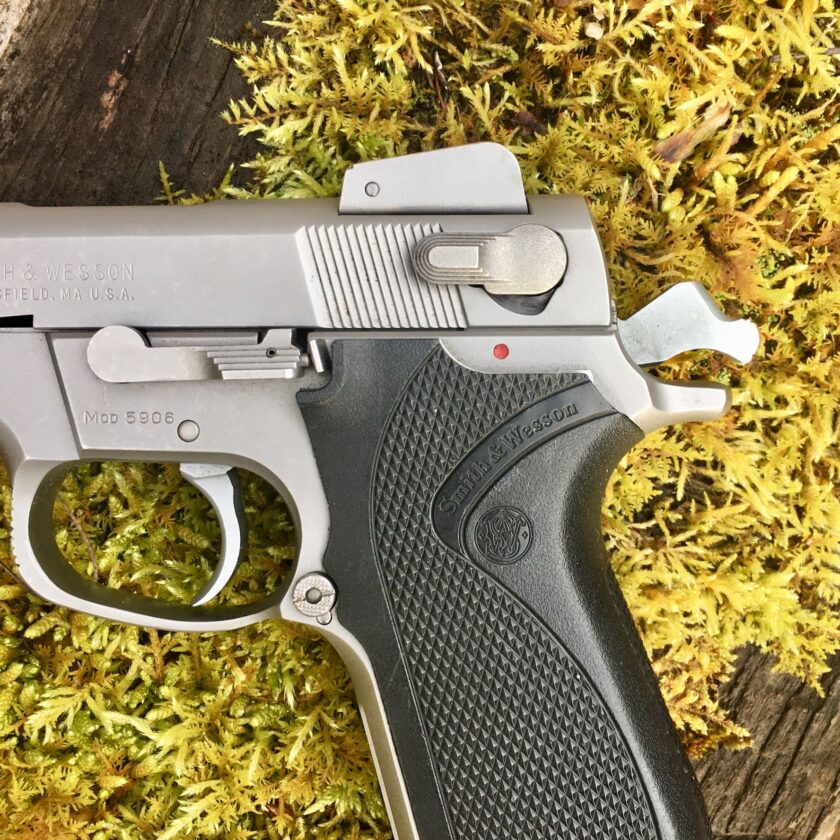
I’m not anti-safety. I am happy to carry a pistol with a well-designed manual safety. If the safety sucks, you’re probably better off without it. The M&P Shield and the Shield EZ are examples of both. The regular Shield has the option for a manual safety, and it’s pretty terrible. It’s small and fairly difficult to actuate. In my opinion you’d be better off choosing a Shield without a manual safety. The Shield EZ on the other hand has an excellent safety. It’s large, ambidextrous, and easily manipulable. If you want a safety on your carry gun be sure to choose a model that has well-designed one.
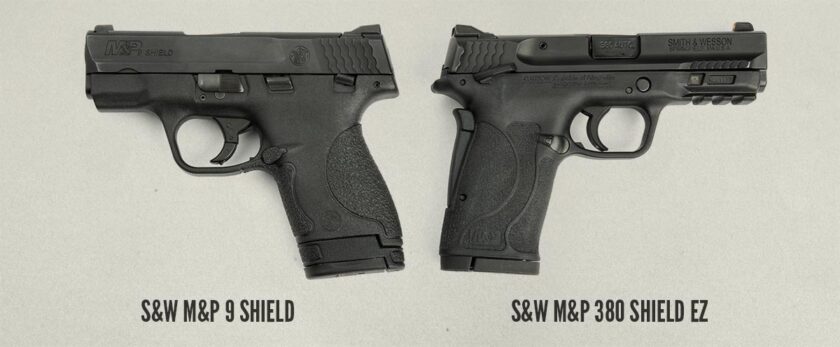
Racking the Slide
Next, do you have the hand strength to rack the slide? Most of my readers are men in the 25-60 age range. Most of you can rack the slide of just about anything, perfectly well. Some of you may not be able to rack an average pistol slide due to injury or arthritis. Some female readers may not be able to do so because of poor hand strength. If not, that should heavily influence your choice. Smith & Wesson’s M&P Shield EZ (shown in the photo above) was designed just for you. Alternatively, a revolver might be a better option for you, though a revolver requires some hand strength to operate the trigger.
Other Controls
You should be able to positively actuate all controls on your pistol. You should be able to depress the magazine release, and hold it long enough for the magazine to fall free. I find it somewhat irrelevant whether or not you have to adjust your grip slightly to reach it. You can still achieve insanely fast, positive reloads even when slightly shifting your grasp. You should be able to actuate the slide stop/slide release. This is necessary to being able to safe your firearm.
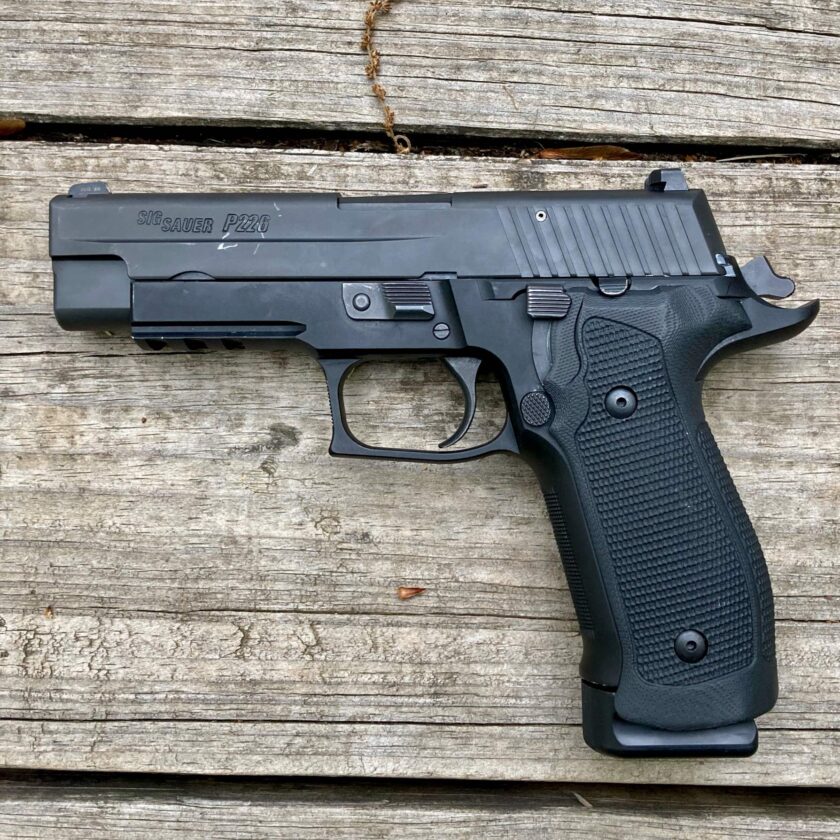
You should be able to operate the trigger, and it shouldn’t take all your strength to do it. My mother had a S&W revolver in .38 Special. She loved it, but did not have the hand strength to pull the trigger one-handed. Instead she used two fingers on the trigger which produced terrible accuracy. Her other method was to cock the hammer and fire single-action shots. Cocking a revolver during a high-stress incident has led to many accidents by many people who are better trained than you. She wisely let me help her adopt a better pistol for her situation.
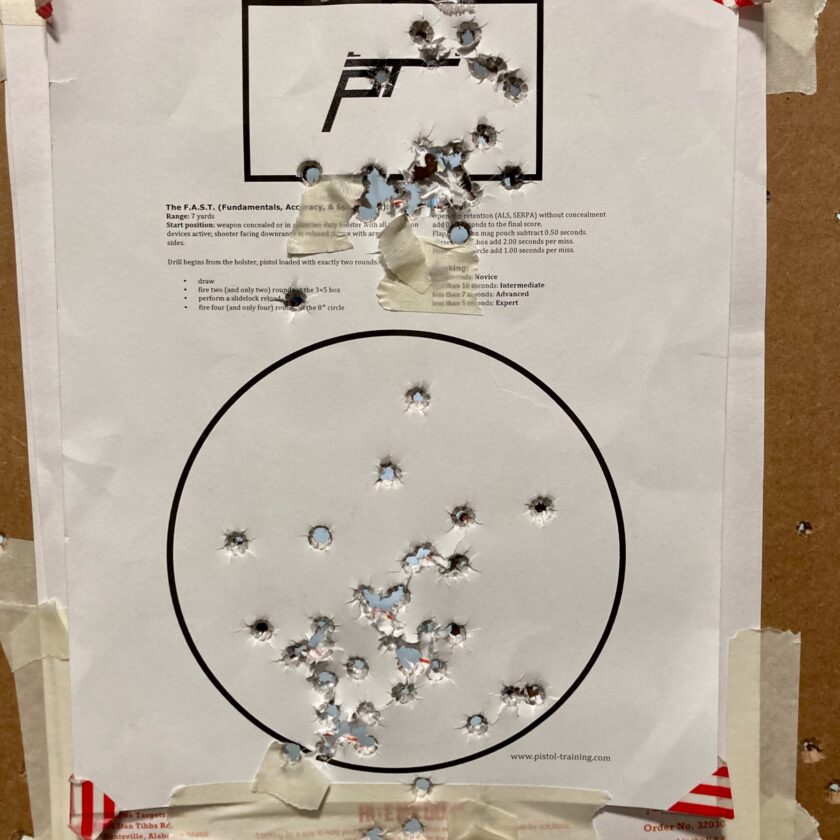
Recoil Management
Importantly, can you manage recoil with your chosen pistol? Recoil management is largely the result of a good grasp on the pistol. Effective recoil management is difficult with a gun that is grossly over- or undersized for you. A good way to answer this question is to shoot some timed drills with published par times. Some examples of such drills are the 5×5 Drill (easy), Wilson 5×5 Skills Test (intermediate), and the FAST Test (difficult). Shoot these drills with several different pistols. Can you at least achieve the most generous allowable time? Does one pistol stand out from the others?
Without some technique it might be difficult to ascertain what effective recoil management looks like. You may suck equally with all the guns you test. I would recommend getting at least some rudimentary training before attempting to test ergonomics and accuracy (and reliability, since it runs in tandem with the others).
Catching Feels
Lastly, does the gun feel good? This is a secondary consideration. Feel is a poor indicator of how a gun will perform. However, you don’t want a pistol that is very uncomfortable. If the trigger guard smacks your middle finger on each shot that’s probably going to cause a flinch. A gun that causes your little finger to hang off the bottom of the grip it may impact your ability to shoot the gun well. If you consistently get “slide bite” or pinched by the gun’s cycle of operations you will probably have difficulty holding the gun steady during firing.
Does my Sig P365 XL pass the Ergonomics test? Absolutely! All of the controls are within easy reach. The gun’s recoil is muted, probably due to some engineering wizardry I can’t begin to comprehend. And this gun “feels good” to me and just about every other gun writer who has shot one. Ergonomics is outstanding.
Phase II: Accuracy
The ability to place bullets where you want them and – equally important – keep them from going where you don’t want is accuracy. Accuracy is an absolutely requirement in a carry handgun. Fortunately accuracy comes standard from the factory on most high-quality, modern handguns. How much accuracy you can get out of a given pistol isn’t a guarantee, though.
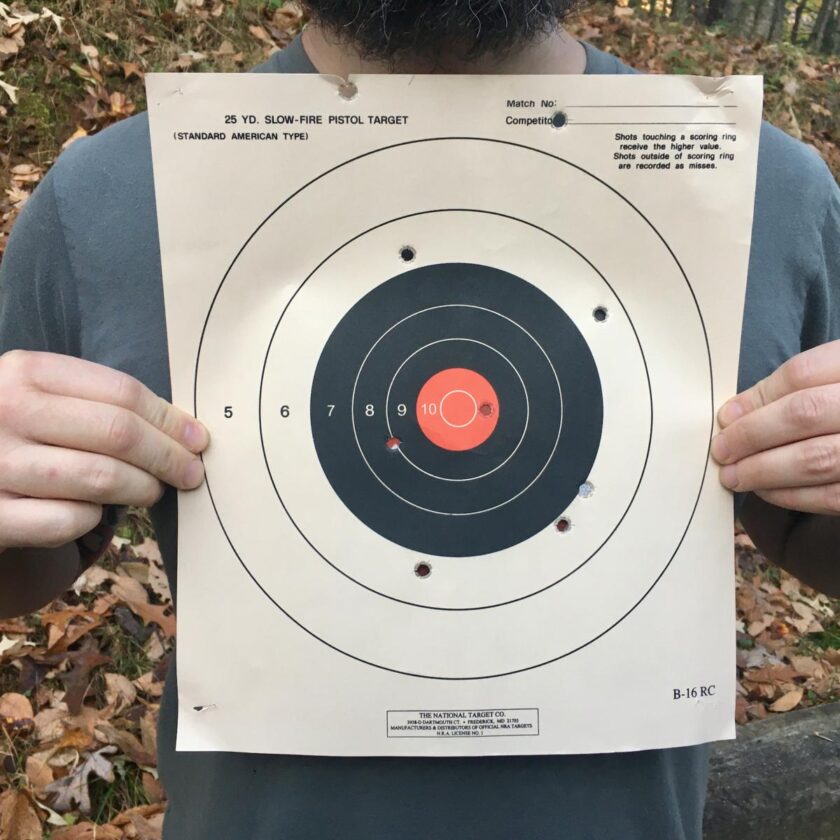
Inherent Accuracy vs. Practical Accuracy
Guns used to be reviewed according to their inherent accuracy. That is, the level of accuracy they were capable of with as many variables removed as possible. This mean locking the guns in a vise, shooting them at a prescribed distance (usually 25 yards) and measuring the results to 100ths of an inch. While certainly interesting this has little impact on how the gun will perform in your very fallible hands. The difference between a 2.76″ group and a 3.09″ group from a bench loosely translates to, “well within your human margin of error.” Put another way, “too little to matter.”
Nowadays it is much more common to see guns reviewed against practical accuracy standards, to wit: can you hit a practical-sized target, repeatedly, under compressed time constraints, at various distances. This type of evaluation is much more valuable, as it evaluates the gun under conditions similar to intended use. If you intend to shoot your guns at very long range from a bench rest (in silhouette competitions for instance), inherent accuracy may matter. If you intend to carry it defensively, practical accuracy matters much more.
Accuracy Myths
A thing I’ve head more than once is the impression that a certain cartridge is inherently accurate. I recently heard this from a co-worker: “I’m gonna get a .45 because they are so accurate.” This is a myth. For all practical purposes just completely forget about this. The truth is this: any high-quality, modern handgun loaded with high-quality factory ammunition is more accurate than about 95% of shooters on the planet.
Another thing I’ve heard is that, “this gun don’t shoot worth a shit!” I’m sure this is a sentiment that many instructors are familiar with, as well. Not to repeat myself but any high-quality, modern handgun loaded with high-quality factory ammunition is more accurate than about 95% of shooters on the planet. Exceptions to the rule are lemons from the factory (very rare) but I have seen a couple. Sometimes a gun is grossly out of adjustment, sights are loose and drifting, or some other mechanical problem interferes with accuracy.
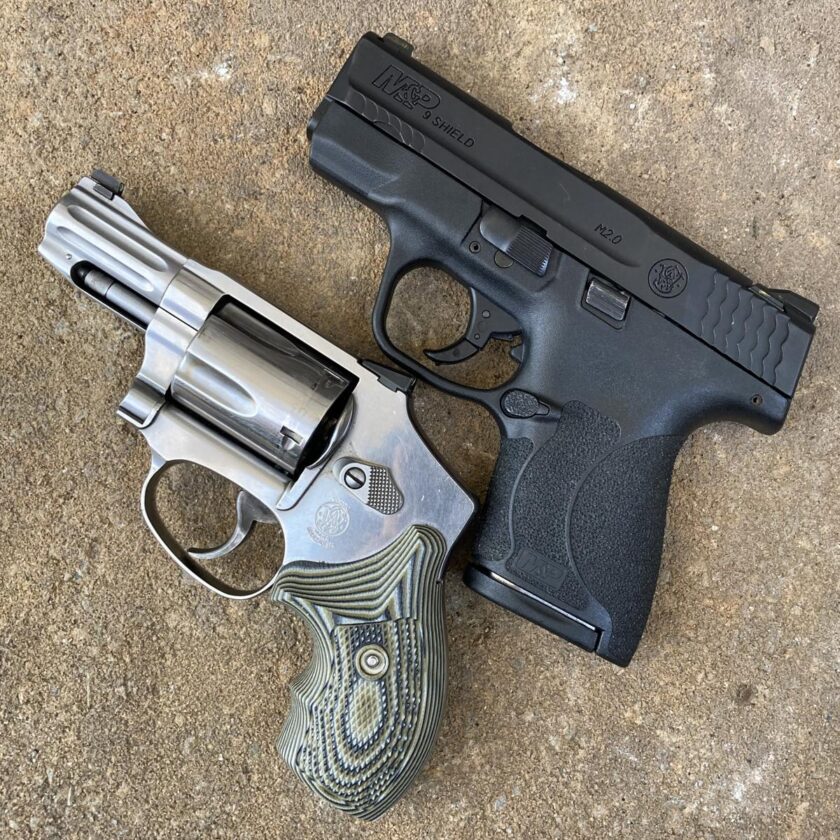
Rarely, though, does the gun have much to do with accuracy problems. Accuracy is almost always in the hands of the shooter. So why am I talking about it? Because different shooters are sometimes capable of getting more or less accuracy out of the same gun. Here’s an outstanding example: the J-Frame revolver.
The small, snubnose revolver is a classic carry gun. Infamously they are also extremely difficult to shoot very accurately but some people can do it. Doing so requires good hand strength, as the trigger pulls are usually in the double digits. Being a somewhat seasoned shooter is also desirable. A shooter who can shoot a semi-auto pistol like a Shield or Glock 19 pretty well may still have quite a bit of difficulty with a snubnose revolver. Choose something that you can shoot well. Borrow or rent guns and get an idea of what you can do before committing financially to a given gun.
So What Is Accuracy?
If all guns (excluding a very rare few) are accurate, what is accuracy? Accuracy in this context consists of two parts:
- your ability to shoot the gun accurately as measured by group size or rounds within a prescribed target and,
- the ability to do so within some predetermined amount of time.
How do you arrive at the answer to this equation? Like the answer to the last question: by shooting drills designed to test accuracy. Again, I would start with the 5×5 Drill. I’ve heard some top trainers indicate this is their “baseline” drill. I believe I’ve read Greg Ellifritz referring to it as the “high school diploma of concealed carry” – passing it is a good thing, but it’s just the beginning. If you can’t hit that 5″ circle at 5 yards, five times in a row you have some work to do.
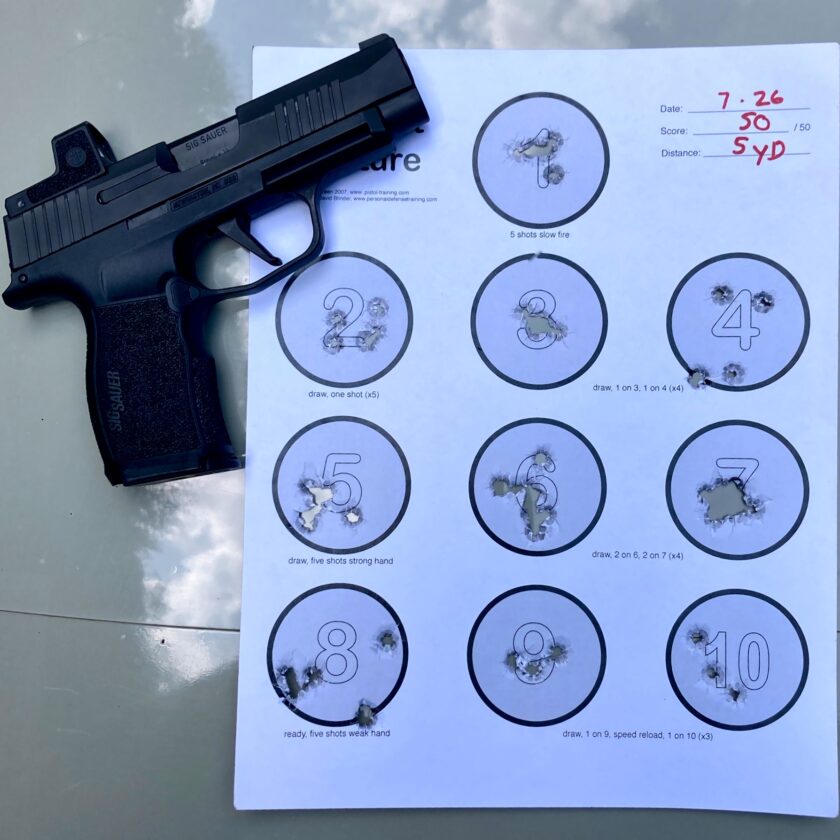
Next, I would strongly recommend moving on to some more challenging drills. One of my favorites is the Dot Torture Drill. This 50-round drill’s focus is accuracy, accuracy, accuracy. It requires nothing more than ammo, a safe, 3-yard range, and about 10 minutes. The primary goal is hitting the correct circle with all 50 rounds at 3 yards. With my 1911 I have cleaned this drill as far as 7 yards. With some snubbie revolvers I have worked really hard to get into the high-40s at 3 yards – less than half the distance. Hardware does sometimes make a difference.
Training & Accuracy
If you have no formal training you may have difficulty with even these basic handgun drills. I have routinely shot with guys who are quick to tell you, “I’ve been shooting all my life,” but who do good to get 30 out of 50 on Dot Torture. You need to reach a baseline level of competency to be able to assess the firearm. However, right up front, some guns will shoot better for you than others. Guns that are much too large or small, guns with long and/or heavy triggers, and guns with excessive recoil will be harder to shoot. At this stage disregard guns that you shoot the worst, and favor the ones that give you the best results, even if they aren’t perfect.
Does my Sig P365 XL pass the Accuracy test? Yes. Surprisingly I shoot this gun about as well as I shoot my 1911, which I have much more experience on. I am very happy with the accuracy of the P365 XL.
Phase II: Portability
Like cost, portability is sometimes viewed as a secondary consideration. I think this is a mistake, because it is one that I have made. It’s often said that a carry gun, “should be comforting, not comfortable.” I disagree. I have too many things competing for my energy and attention to endure an uncomfortable gun. As a result I didn’t actually carry very much when I chose guns that were too large. I have tried to carry hardware that was too large, or too uncomfortable. After a few months when the novelty wears off it becomes very easy to talk yourself out of shoving that big holster in your pants and lugging two pounds of steel around all day.
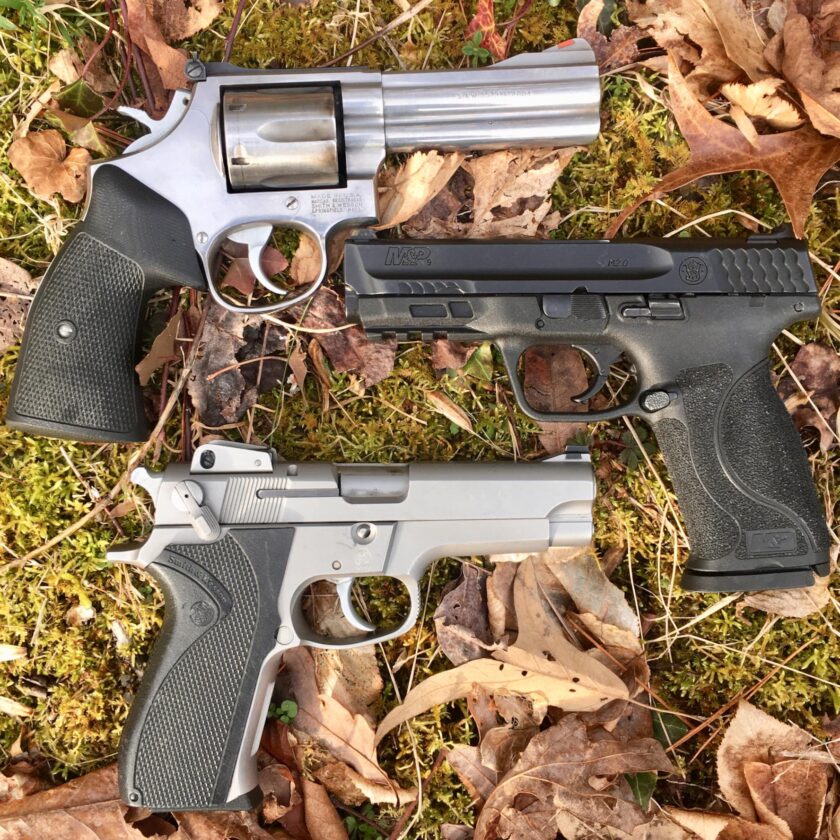
Conversely, many people buy handguns that are way too small. These firearms are incredibly portable, hence the allure. The general appeal to these people seems to be the low level of effort required to carry these tiny guns. Unfortunately this imposes a massive penalty on ergonomics and accuracy, and sometimes tiny guns are less reliable, too. Not always, but definitely sometimes.
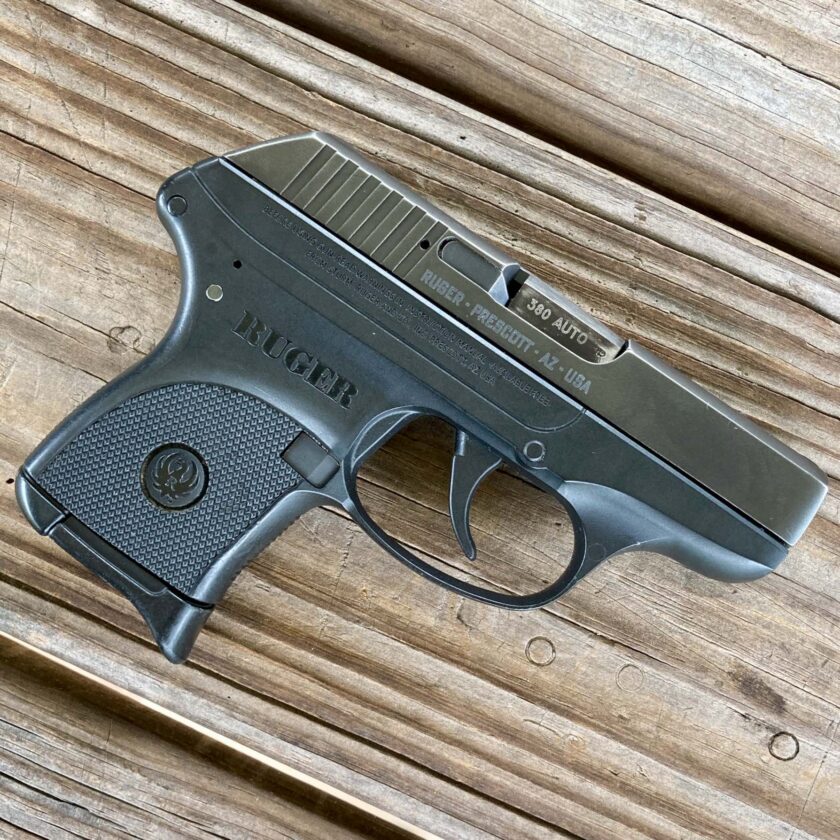
Defining Portability
So what is portability? It’s a hard one to define, but I’d say the heart of it is balance. Don’t err too far on one side or the other. If carrying a gun is absolutely effortless it’s doubtful that the gun is bringing much to the table. If carrying the gun is a chore it’s doubtful you’re going to stick with it over the long term. It is very hard to avoid vagaries like “enough gun” when discussing portability but there are a few factors we can look at.
The first is “concealability.” Can you conceal the gun in your normal attire? Thankfully gun writers have kind of moved on past the “dress around the gun” nonsense. None of you are going to throw away all your clothing and start from scratch so you can carry a gun. You carry gun probably needs to somewhat work with your wardrobe. I’m not saying you should be unwilling to make a few adjustments; you may have to adopt a new belt, slightly larger jeans, and go up a shirt size. You shouldn’t have to wear a jacket in July to conceal it.
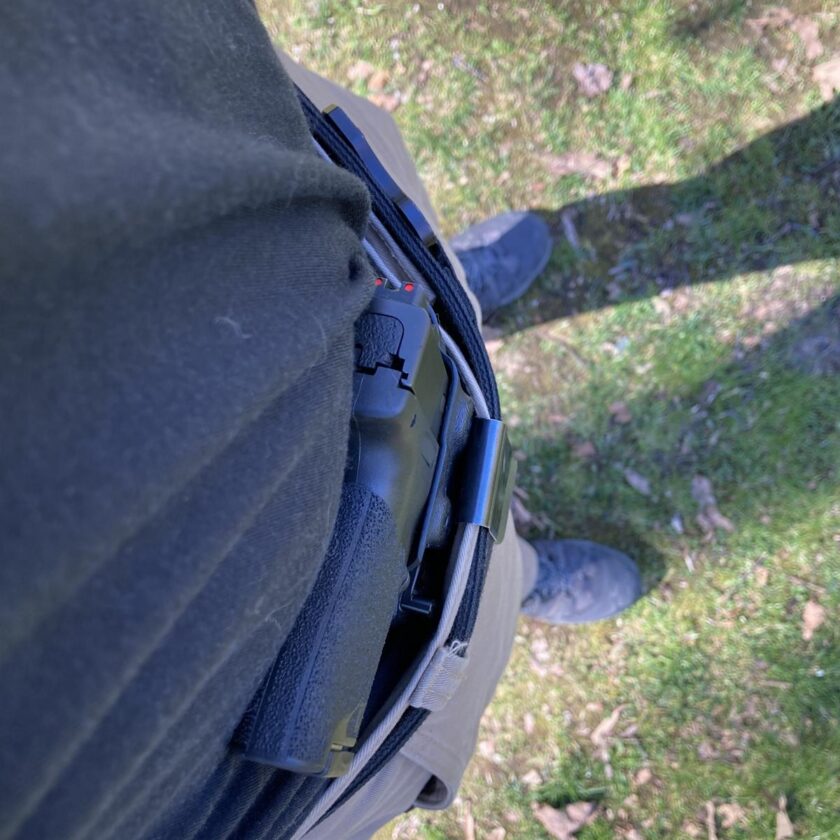
The second is comfort. Is the gun comfortable? Nothing makes me want to abandon a carry gun faster than sharp edge poking me in the belly every time I bend at the waist. Likewise a gun that pulls my pants down and requires constant adjustment. A bulky holster that makes me look forward to getting home and getting the gun off is a no-go.
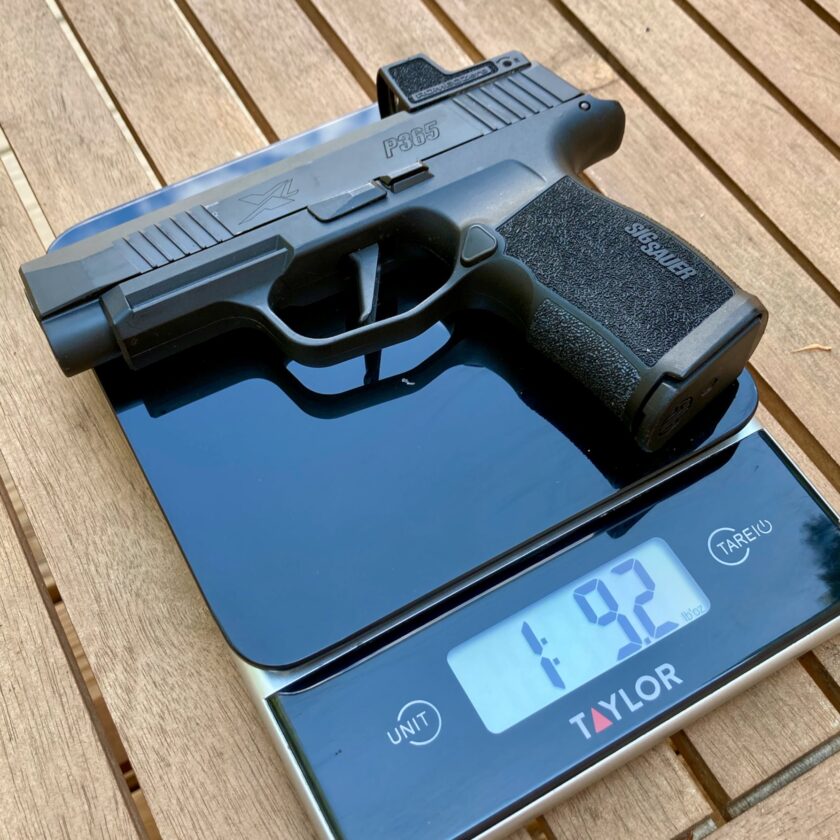
Does my P365 XL pass the Portability test? Yes. I have been carrying it in a Phlster Pro Series holster. Honestly, it has sort of made it hard to go back to my 1911.
What I Recommend
OK, cut-to-the-chase time: what guns do I recommend for a carry gun? Despite the tools to make your own, objective evaluation, some of you will doubtlessly wonder what I recommend. I’m glad to provide some recommendations, roughly in the order of my preference. All of these guns pass all of my tests: Mature Technology, Brand Reputation, Adaptability & Industry Support, Chambering/Caliber, Reliability, Portability, and Accuracy. It is up to you to determine if they pass your tests for Cost, Special Considerations, and Ergonomics.
I did try to list prices. I tried to list a realistic retail price for each of these guns as of September 2021. All of my prices were found on Gunbroker.com. If you’re shopping over the counter you’ll probably pay a bit more. Keep in mind that gun prices are subject to wild swings.
Sig P365 XL (9mm Luger)
I really like this pistol. I like it even more than I did when I purchased it. It punches way, way above its weight class. Recoil is as manageable as much larger 9mm pistols. Capacity isn’t bad at 12, or 15 with an longer magazine. Accuracy and handling are superb. I’m still working to ascertain reliability, though I have little doubt it will succeed. The P365 XL is also a much smaller and lighter pistol than guns offering similar capacity. I would recommend it without question, and a full, detailed review is in the works. The P365 XL retails for right around $600, and closer to $700 in the configuration I purchased (with red dot optic).
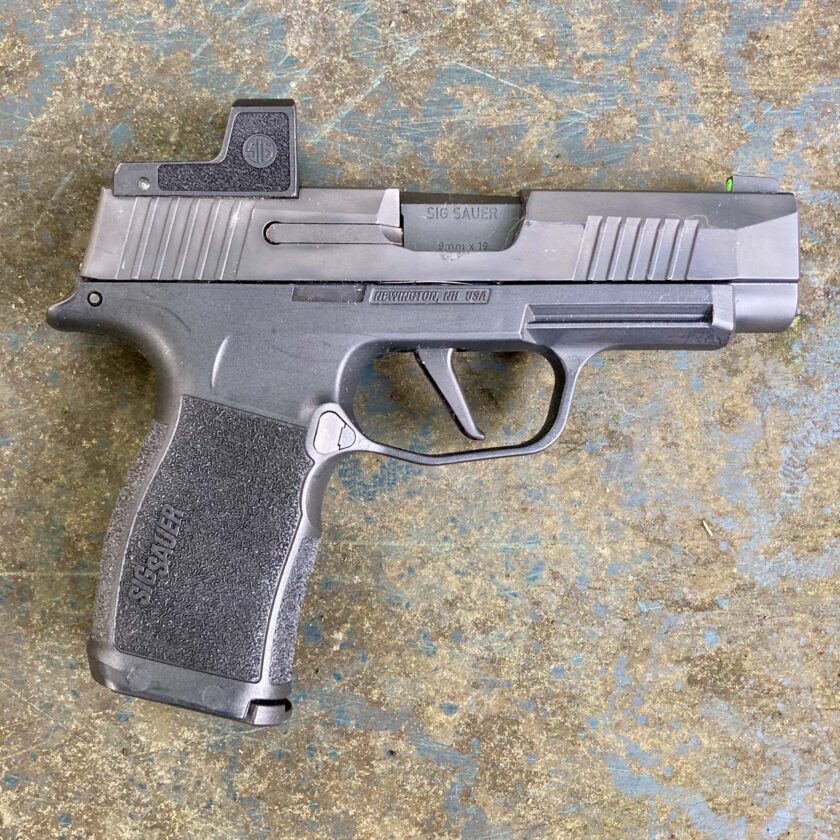
S&W Shield (9mm Luger)
The S&W Shield is one of the most popular pistols in the United States and for good reasons. It is compact, lightweight, isn’t punishing to shoot and is very accurate. The Shield is just an all-around great gun, and it’s affordable. Everyone makes a holster for the Shield. My favorite Shield is the long-slide version. The newer Shield Plus isn’t quite “mature technology” yet but I think it will be a good carry pistol. I think the 2.0 Shield is an outstanding budget option, retailing around $400. I was able to find a long-slide Shield retailing on line for $469, and the Shield Plus models starting as low as $479.
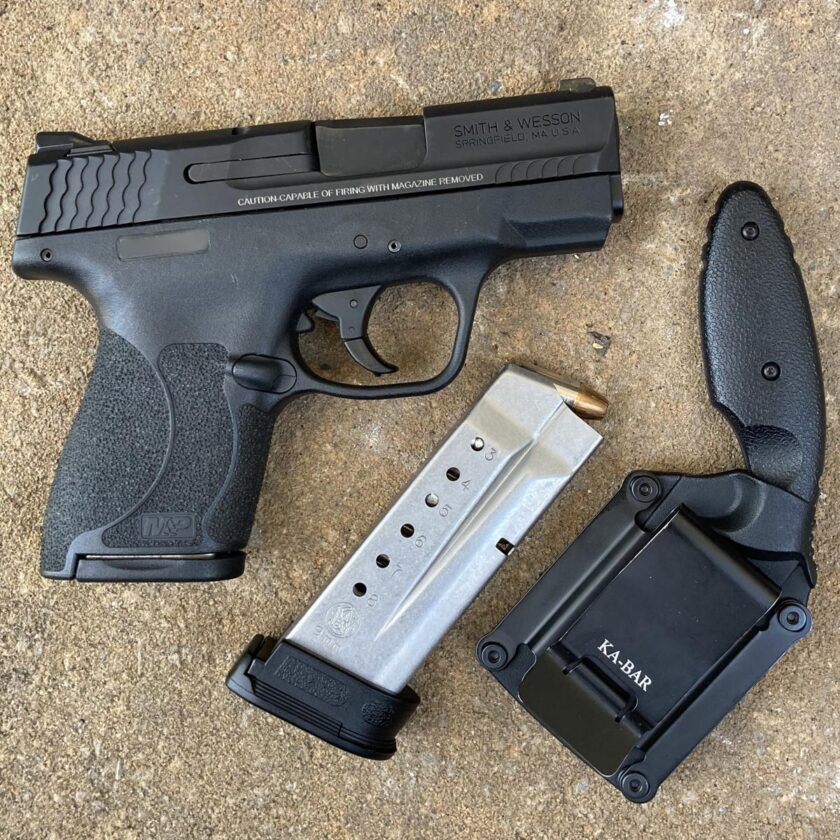
Glock 48 (9mm Luger)
I’ve never been a Glock fan but if I were going to carry one, this would be it. The Glock 48 is essentially a single-stack Glock 19, which solves the biggest problem I have with the Glock 19: the fat grip. This slender 9mm is an outstanding pistol, but is just a bit larger than the Shield or P365 XL. With aftermarket magazines from Shield Arms the G48’s capacity increases from 10+1 to 15+1 without increasing in size. It truly is a case of something-for-nothing. The Glock 48 can be purchased for under $600, sometimes well under.
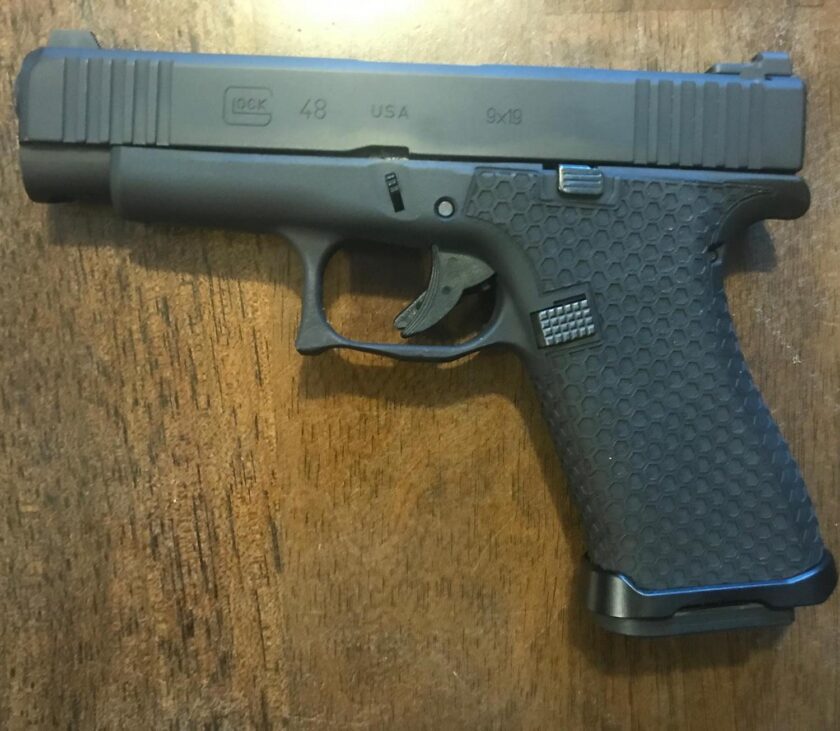
I think the three pistols above represent the largest guns most folks will actually carry on a daily basis. They are excellent all-around pistols. They shoot well for most people and all have a reputation for reliability. Of the three of them the Shield is probably the most difficult to master, and it’s not a terrible shooter relative to its size. Personally, these guns are about the max size I’m willing to tolerate for day-in-day out carry. If you’re looking to step up in size a bit there are a couple more I’d recommend, as well.
Glock 19 (9mm Luger)
I’ve made it no secret that I’m not a fan of the Glock 19. Frankly I don’t shoot as well with it as most of the other pistols listed here. I can’t deny its popularity, though. It’s obviously popular for a reason: it works exceptionally well for many, many people. It has literally set the reliability standard, is widely available, accurate, and is one of the most supported guns by the aftermarket. I don’t think you’ll go wrong choosing the Glock 19 if you intend to use it for home defense and range/training sessions. If this is a first carry gun for a first-time carrier, I find it a bit bulky for day-in, day-out carry. You can buy a Glock 19 all day long for $600.
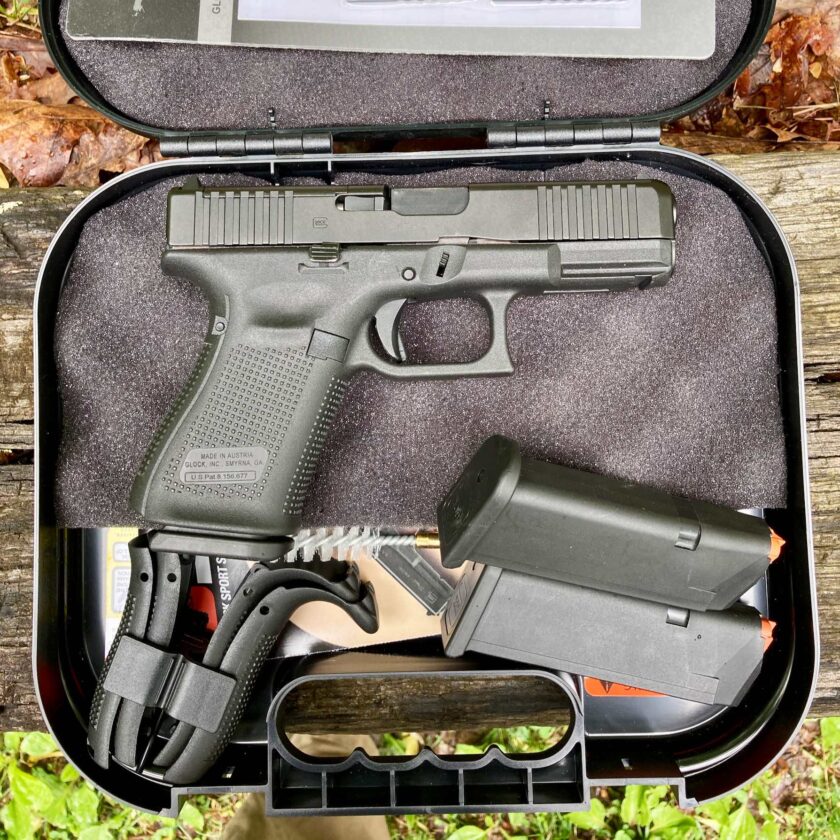
M&P Compact (9mm Luger)
I own an M&P 2.0 Compact. It is almost identical in size to the Glock 19 and has the same capacity (15+1). Though it is less popular than the Glock 19 it does enjoy a similar reputation for reliability. I find the M&P enjoyable because of the more contoured grip. Unfortunately – like the Glock – I find it to be a little big for everyday carry. The M&P Compact also comes in a small 12+1 version that is intriguing but I have no personal experience with it. The M&P Compact is also a pretty good budget option, retailing for around $500 for a top-quality pistol.
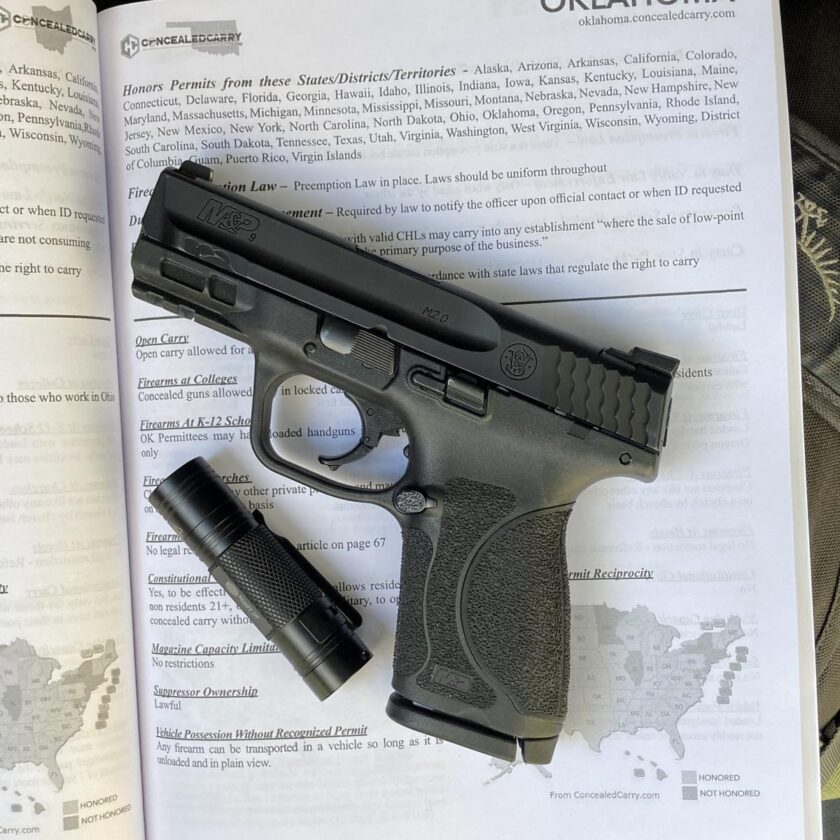
If You Make a “Bad” Decision
Despite having “all” the information you may make a bad decision. You may read this article and decide you’ve made a bad decision. As you begin to attend training you my learn your gun’s problems and find out you’ve made a bad decision in choosing a carry gun. It happens. Trust me – I’ve made LOTS of bad decisions. So what now?
Ideally you could run out and buy another gun and start testing all over again. That’s not realistic for many people out there, myself included (I sold three guns to finance the P365 in this article, remember?). Don’t despair. There are a couple big classes of problems you might run across, and there are ways of dealing with both.
Hardware Problems
If the problem is a hardware problem, like your gun not feeding reliably, do some research. You may be able to solve recurring malfunctions through something as simple as switching ammo or magazines. The problem might be a bit more complicated and require some very light gunsmithing, like changing a spring. Sometimes lack of maintenance or under-lubricating can cause problems. Before cursing the gun and the day you bought it, see if you can fix the issue.
Also consider the services of a gunsmith. Be careful not to throw good money after bad. For example, if a gunsmith wants $200 to fix your $300 Bersa, reconsider. Is it worth turning a $300 gun into a $500 gun? Or would you be better off selling the Bersa for $250, adding the $200 you’d have paid the gunsmith and having $450 to put toward a better carry option?
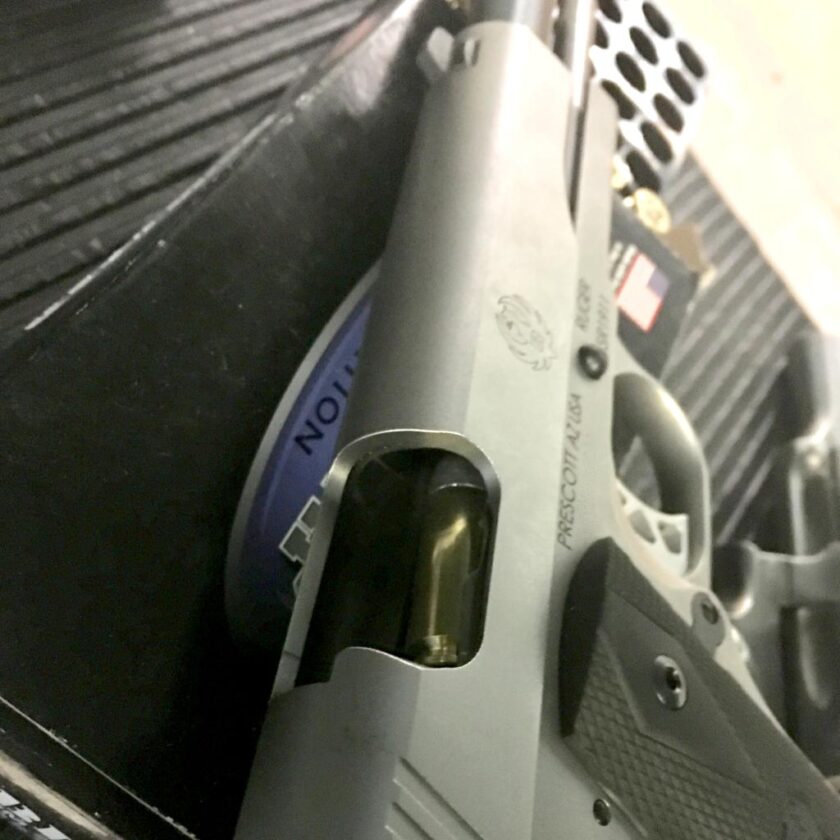
If the issue is unfixable, you can always sell the gun and re-approach the problem of choosing a carry gun with a more educated eye. There are several options here. You can sell the gun on a site like Armslist.com. Armslist is sort of like Craigslist for guns, allowing for local, face-to-face sales. It does charge a small, monthly fee to verify you are a real human. How to make sure such a sale is safe and legal is beyond the scope of this article, but this piece from Lucky Gunner should get you pointed in the right direction.
Another, bigger alternative is Gunbroker. Gunbroker allows for online sales. People from anywhere in the U.S. can shop for the gun you are selling. Receiving payments and shipping firearms sold through Gunbroker is a bit more complicated than face-to-face transactions. Plenty of articles online detail how to be successful, safe, and legal with online gun sales.
Software Problems
Sometimes buying a new gun is simply not an option. There have been several phases during my life when this was the case. During one period in my life I was strongly encouraged to adopt revolvers because the very restrictive state in which I lived. Rather than complain about it I embraced it. I became really proficient with revolvers (which come with some unique problems) in a way I wouldn’t have otherwise. Instead of buying something new, I made myself into something new.
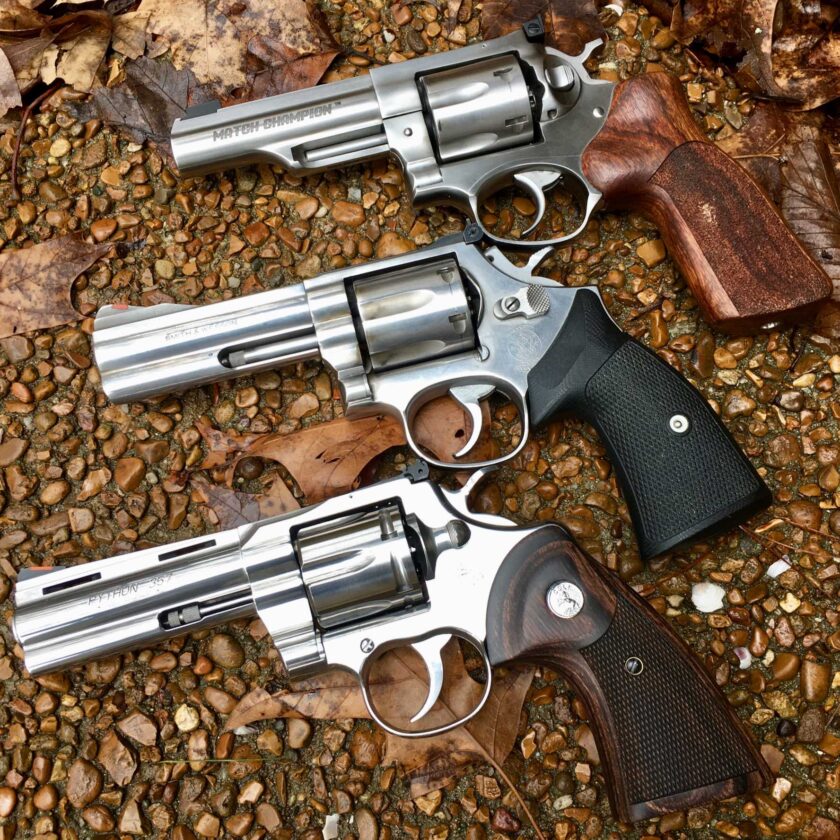
Many (most?) problems can be solved with a firmware update. That is, updating your mental firmware through tons of dedicated training and practice. If the gun works as intended by you aren’t getting the results you want, invest the time and get good. For example, you bought a revolver and realize your shots are all over the paper. Dig in, spend $20 on some snap caps, and commit to dry practicing. Build your hand strength. Learn the trigger. Smooth it via the “1,000-round trigger job,” a half-joking reference to how the action will smooth out with use.
Honestly, most guns will do if you will do. If you don’t have and can’t afford the perfect gun, make do. Hardware is rarely the difference-maker.
Closing Thoughts
If you’ve stuck with me this far, thank you. This isn’t the longest article on the blog but it’s getting up there. Most of my audience already knows most of this information. I’m not giving you much, but I am asking a couple things in return.
First and most importantly, please share this article! There are a lot of people out there who need it. Most of them are not going to come to this blog. Please help disseminate this information, and help someone else make a better choice when it comes to choosing a carry gun.
Secondly, please consider contributing to our Patreon (click on the big, blue banner at the bottom). Writing articles like these consume tens of hours and sometimes hundreds of dollars. I spent a lot of mornings and an entire day off working on this article. A lot of historical training, practice, and experience are also encapsulated here. Please help me keep this kind of content coming. And if you already contribute, thank you!
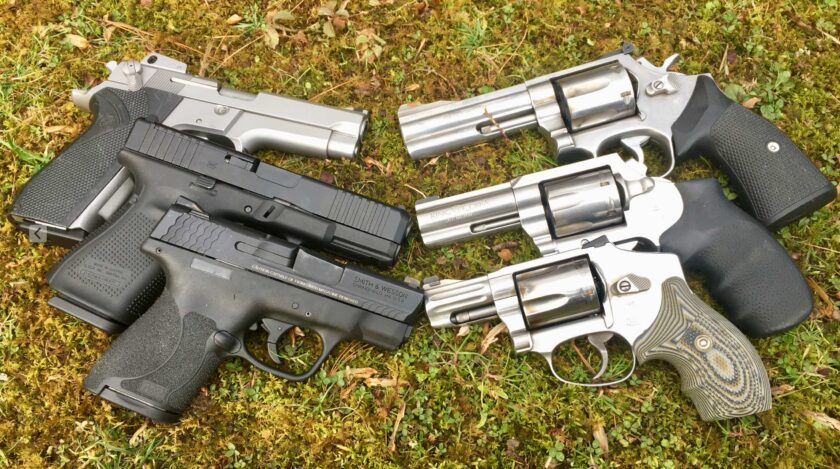






1 thought on “Gun Owner 101: Choosing a Carry Gun”
Comments are closed.